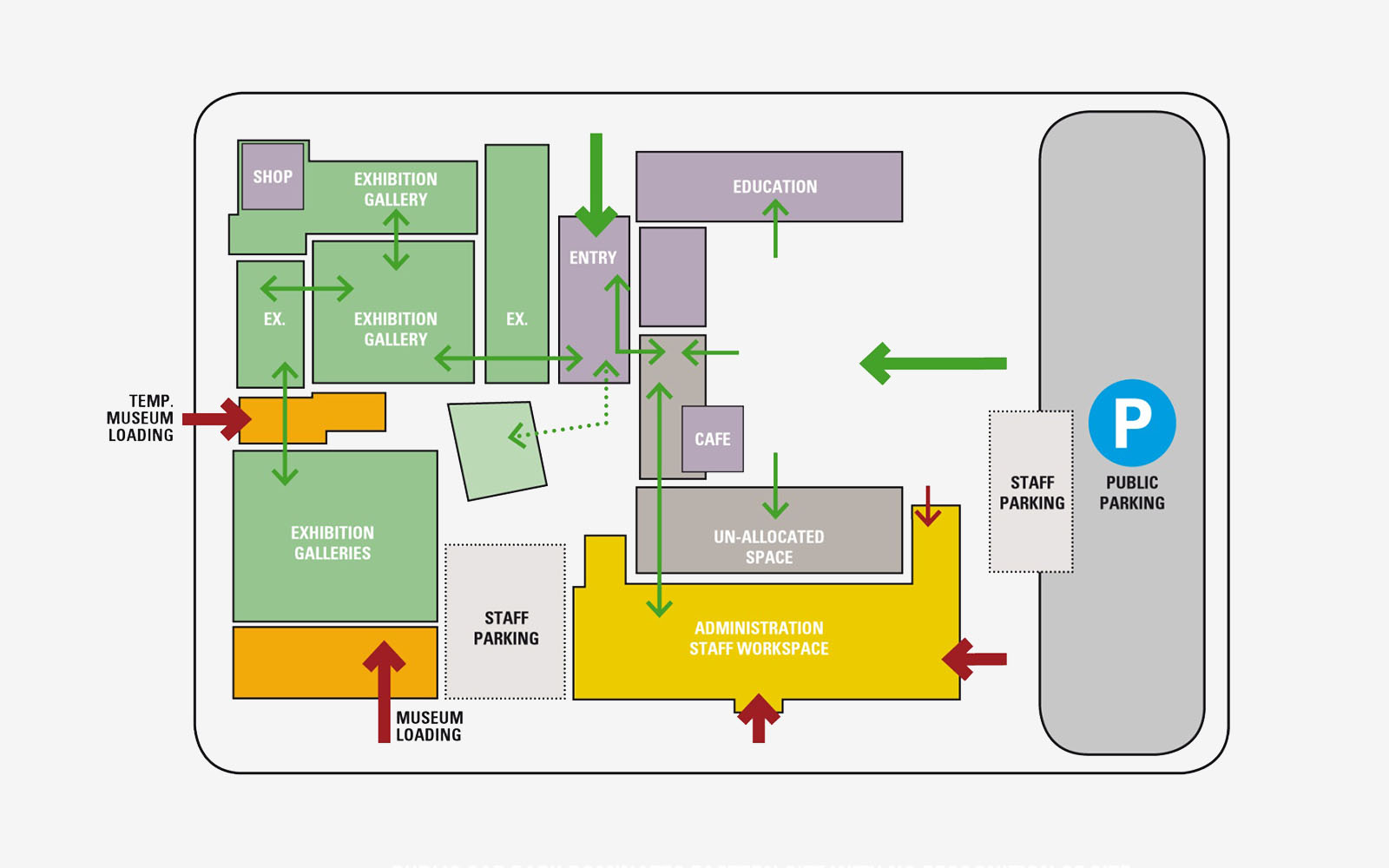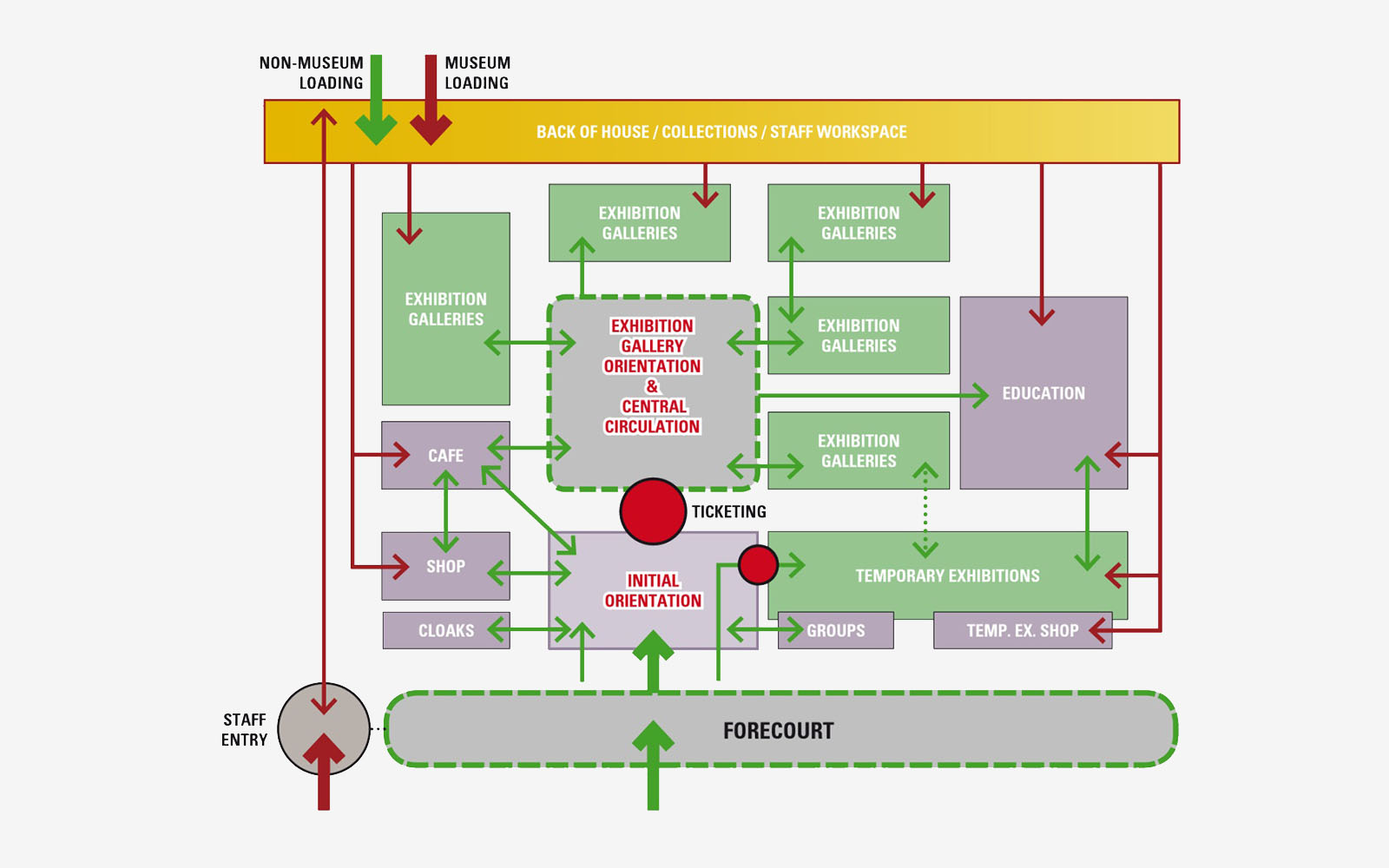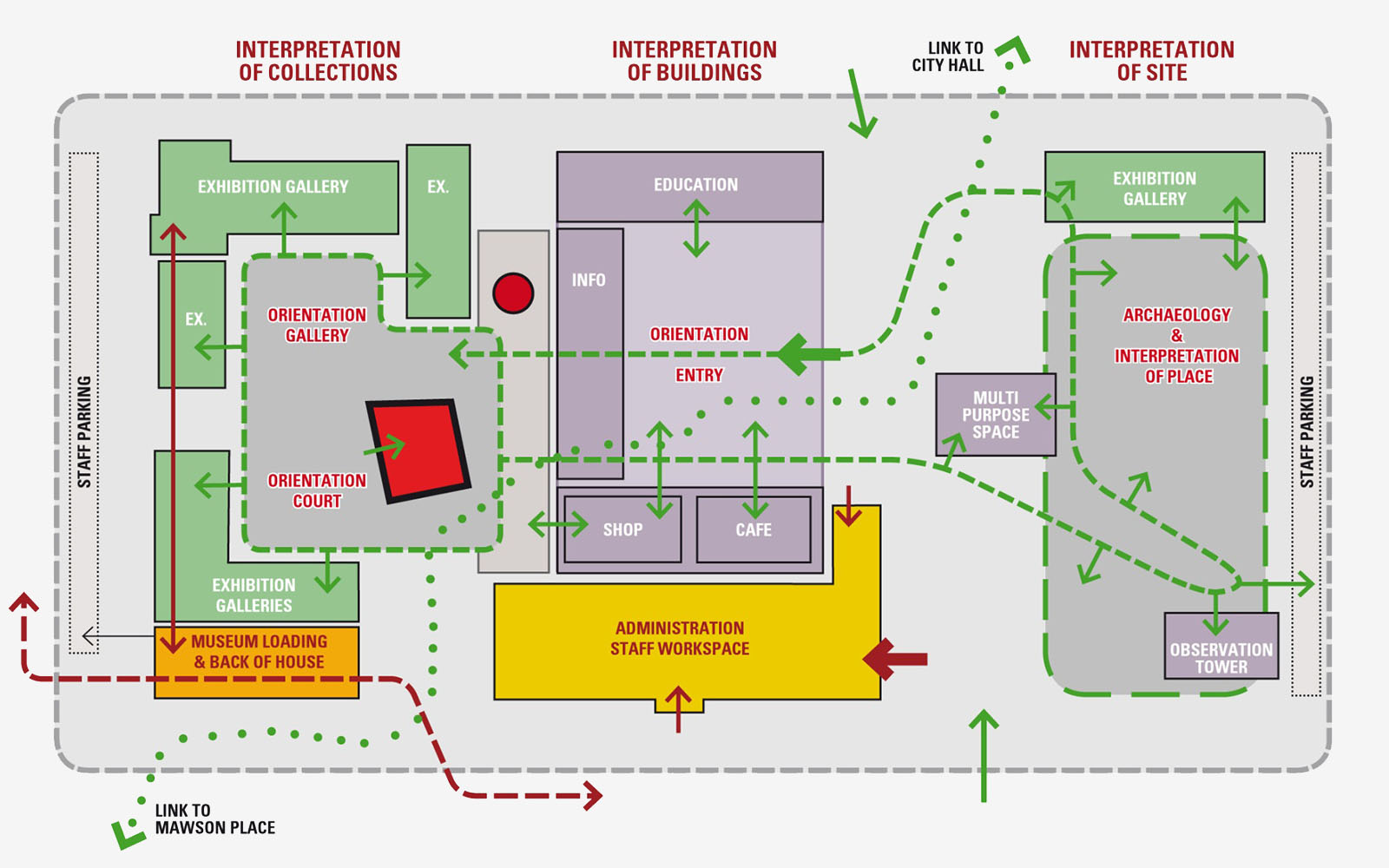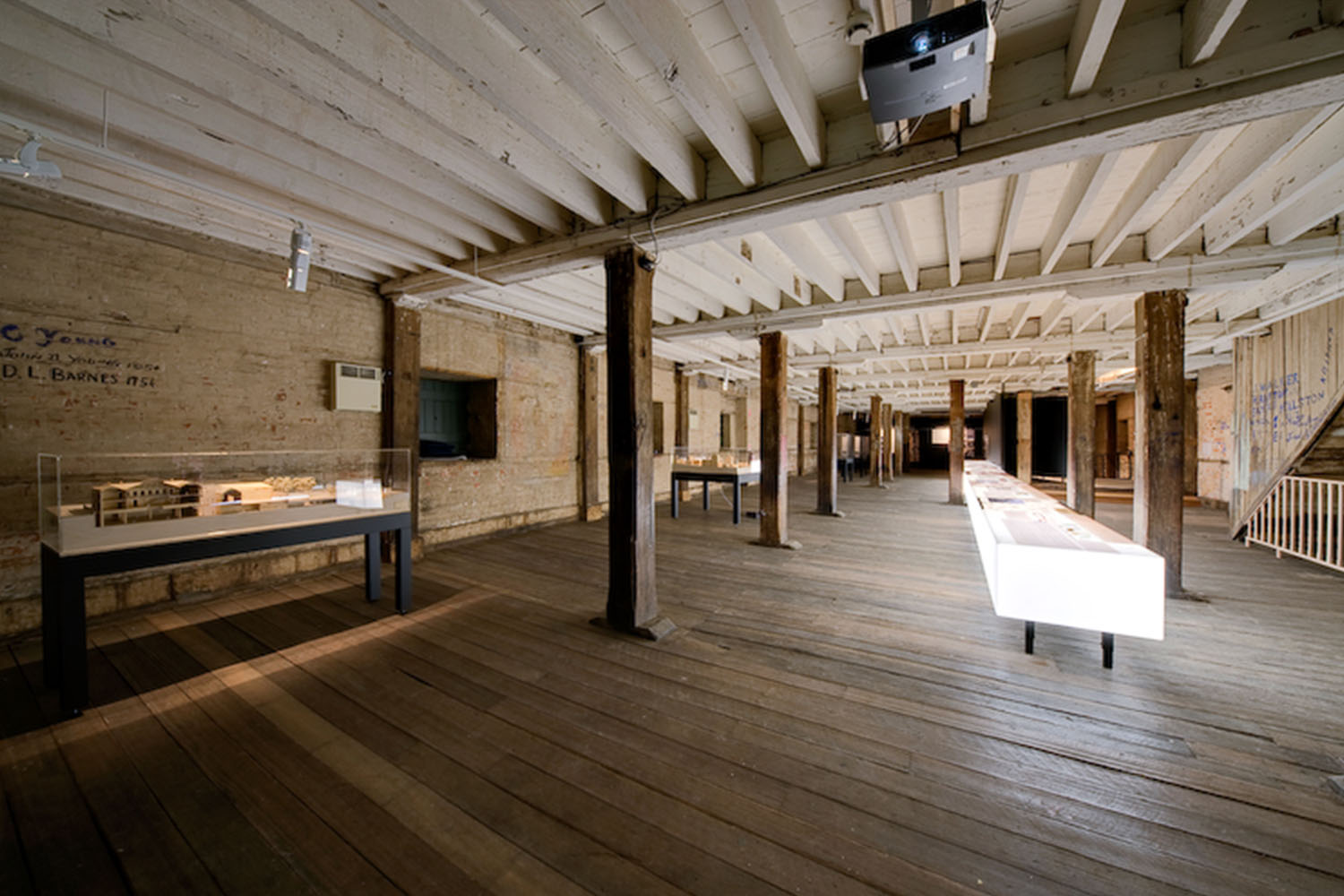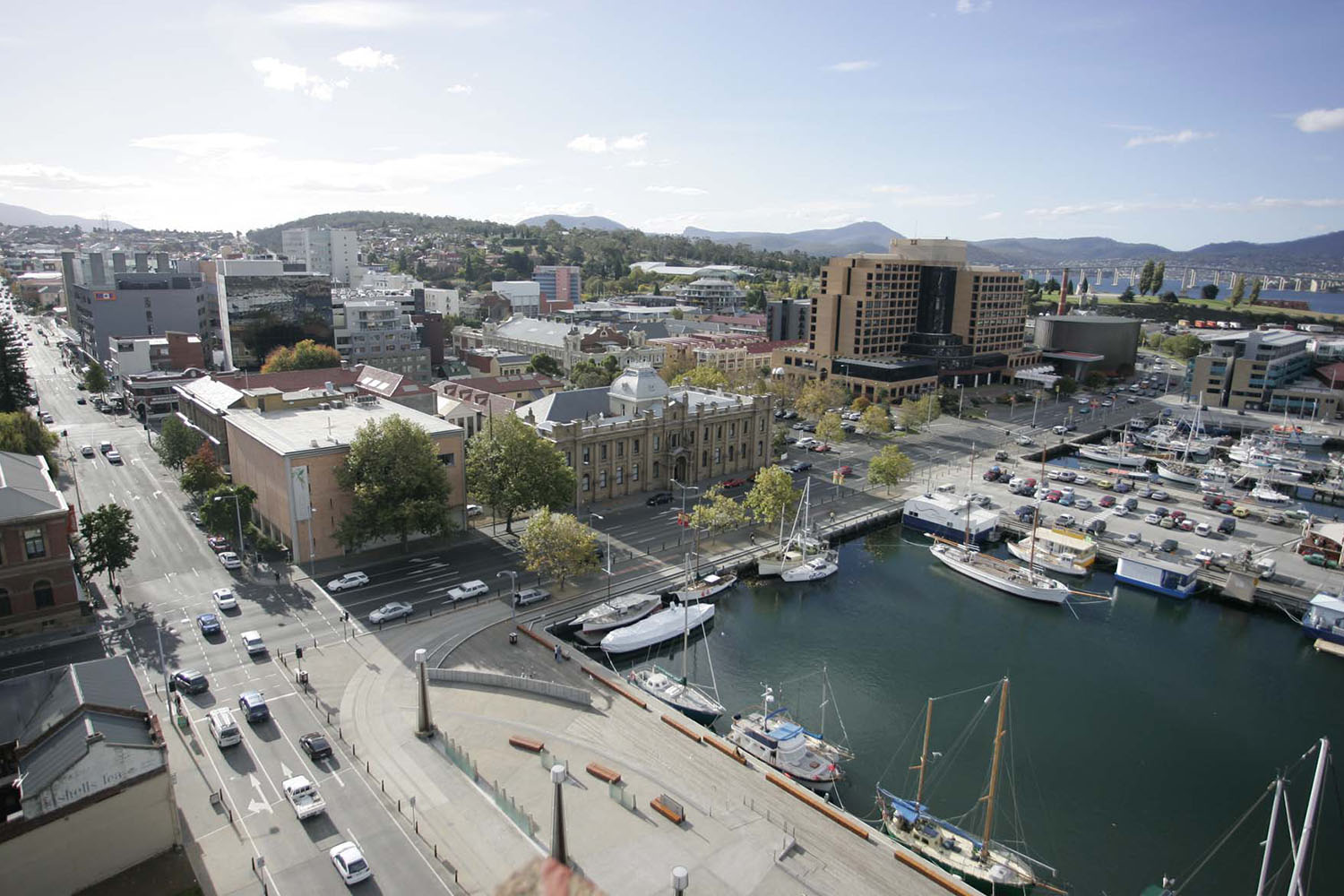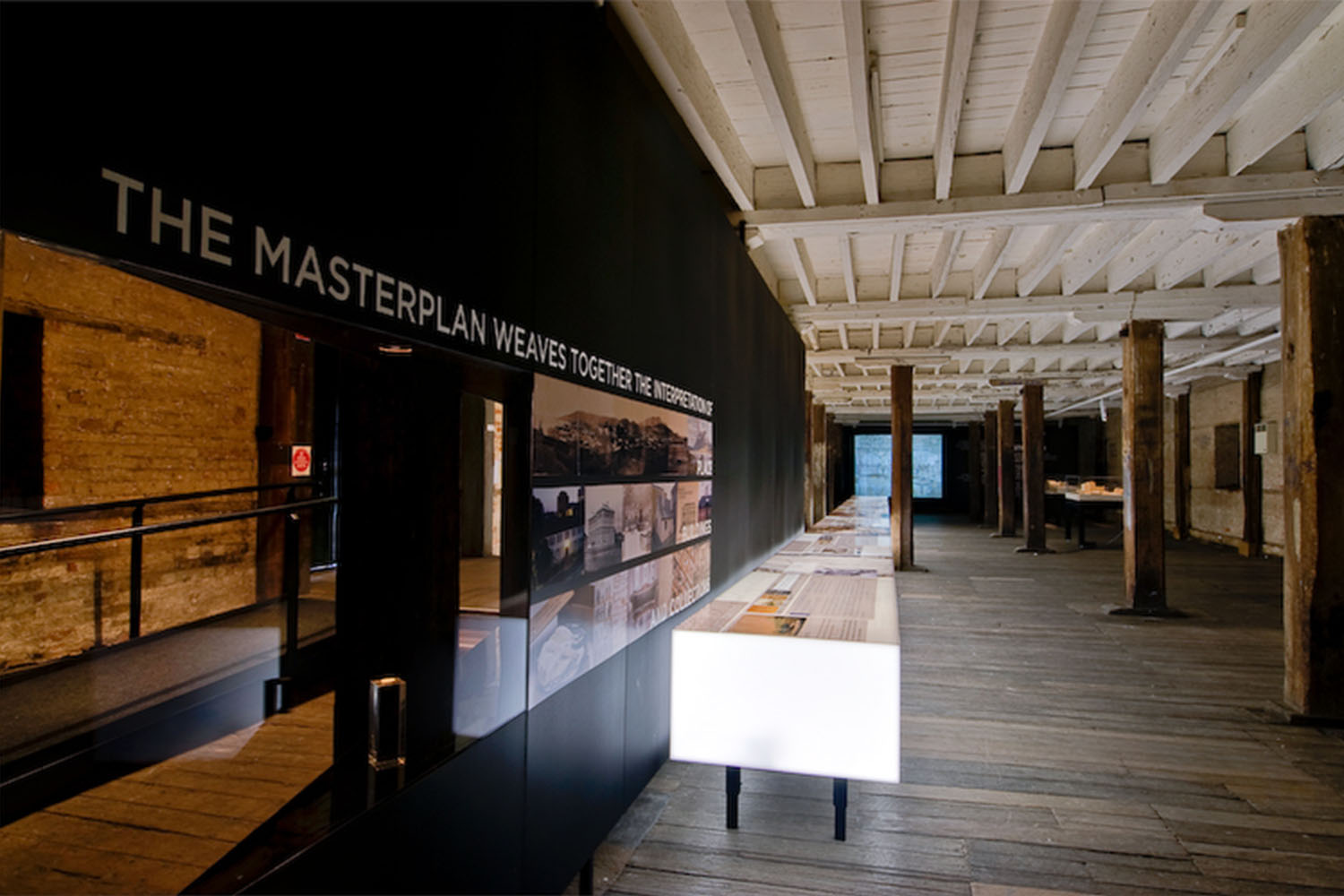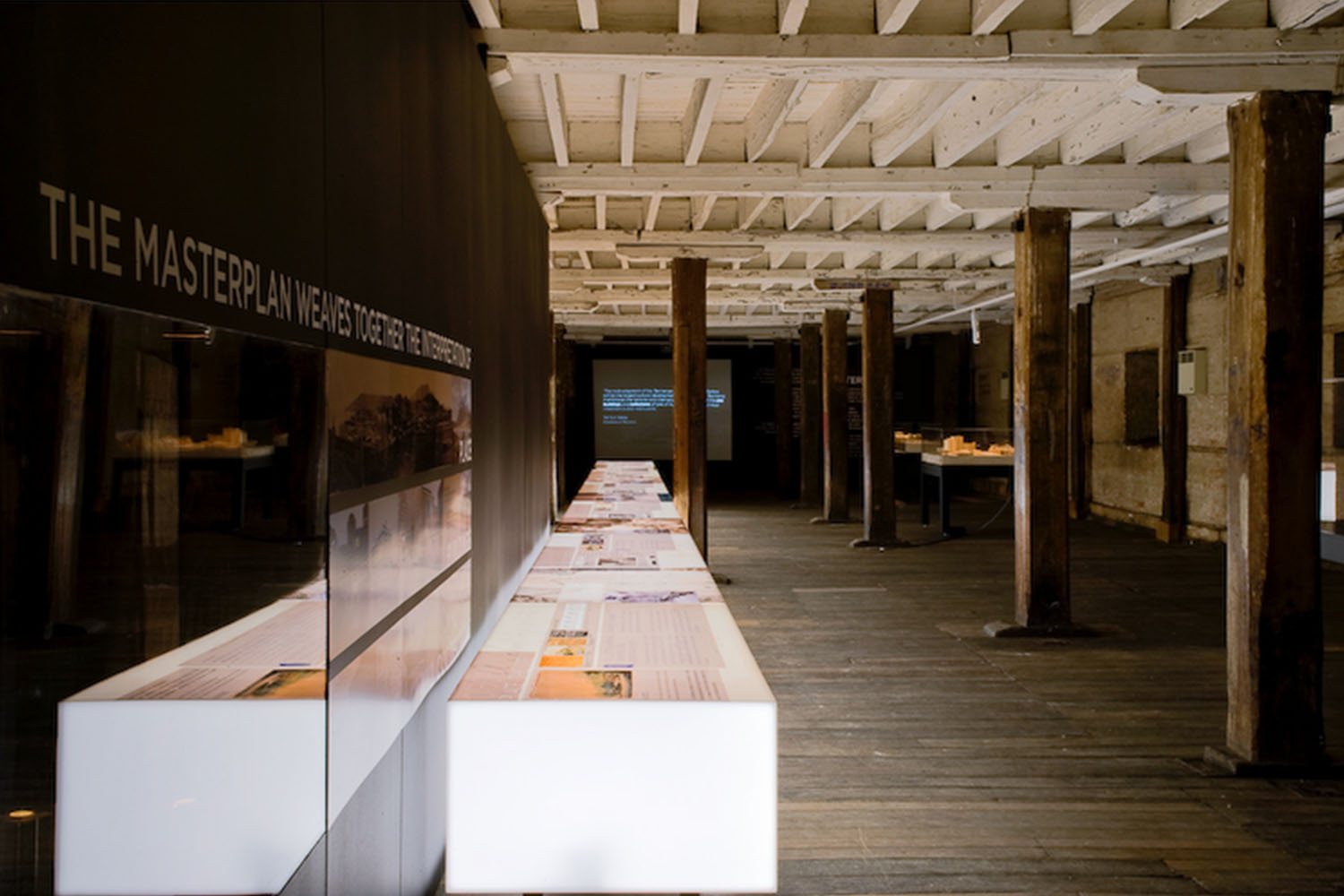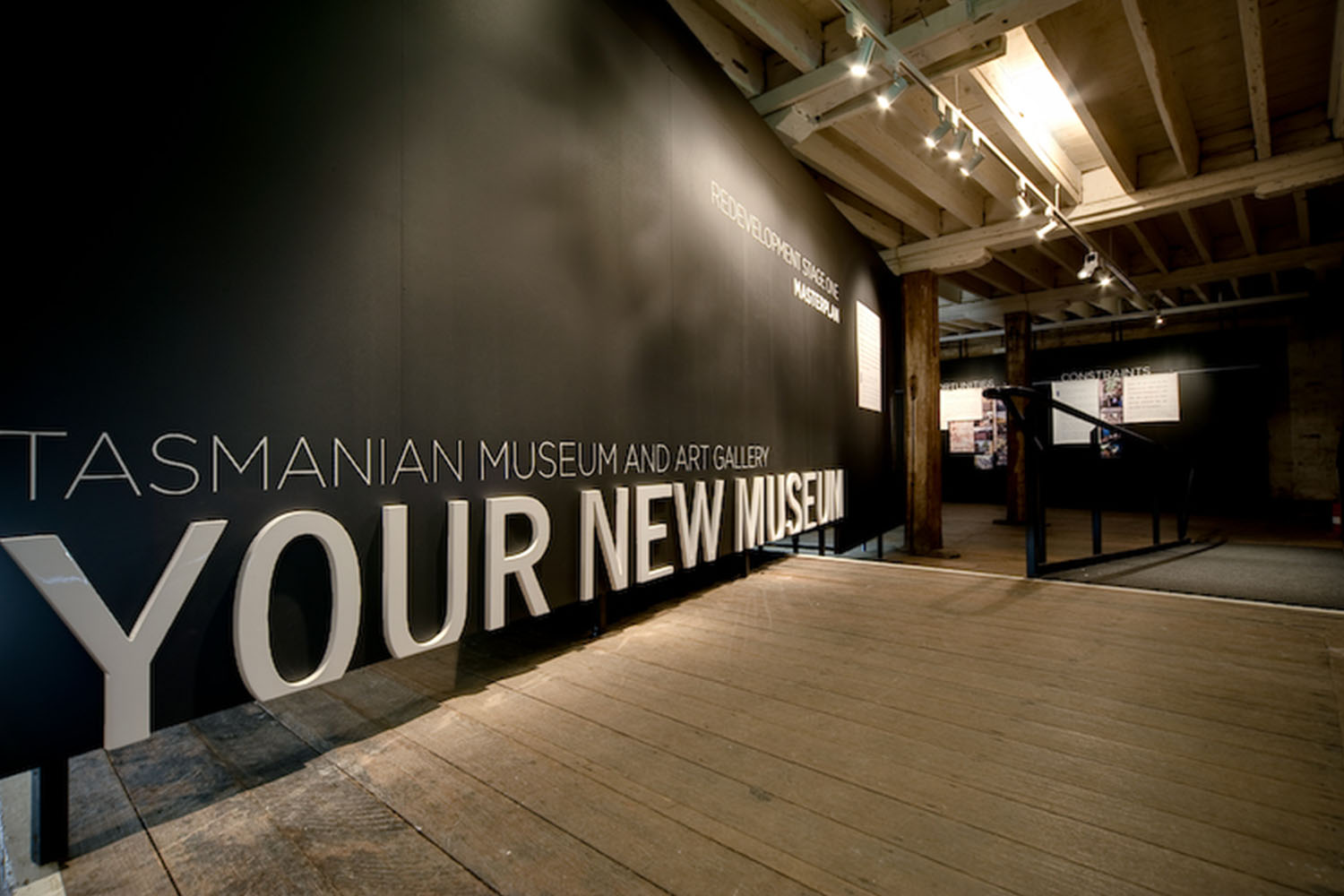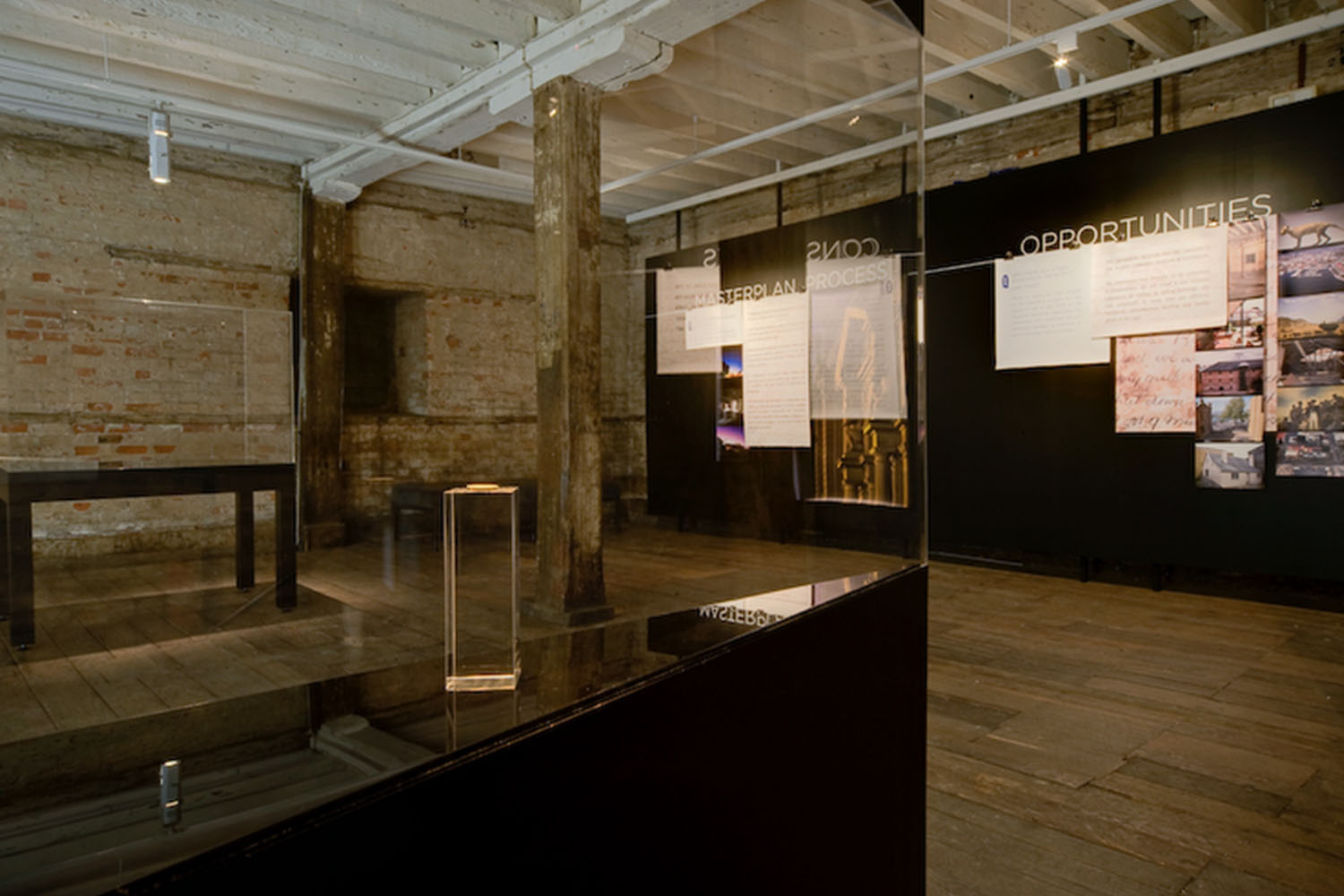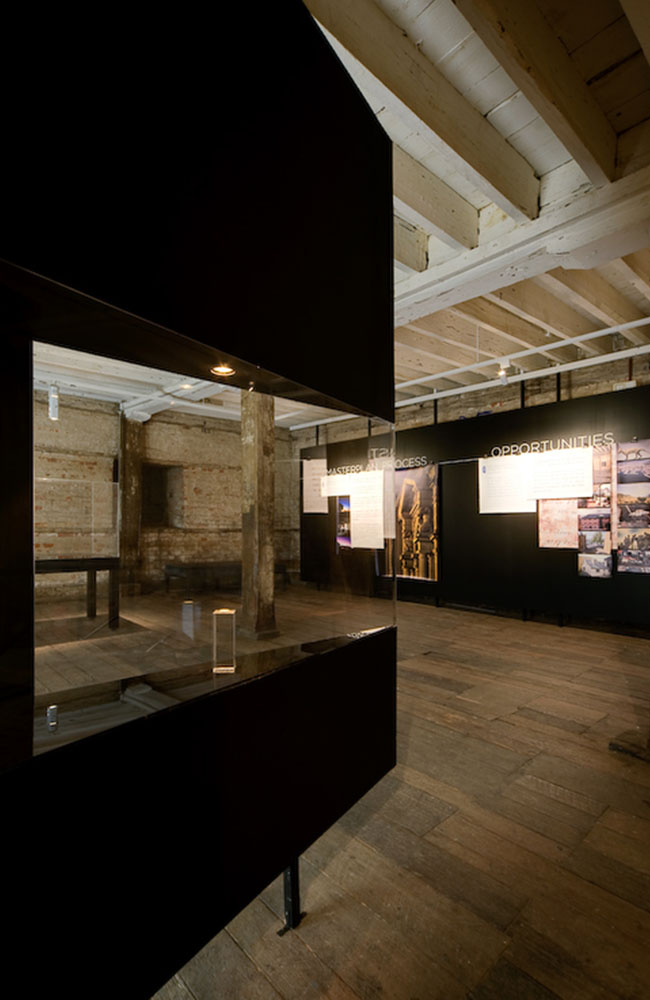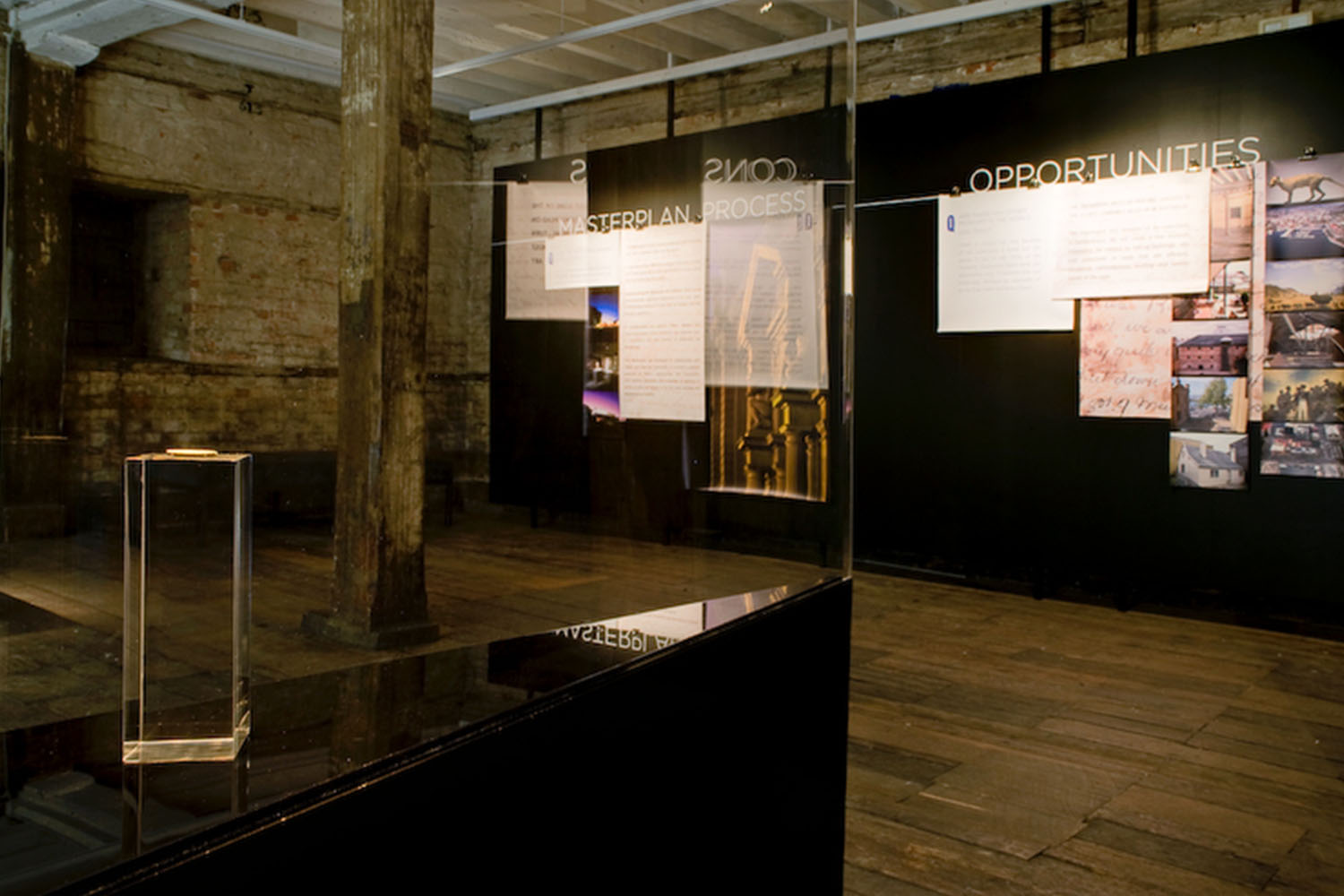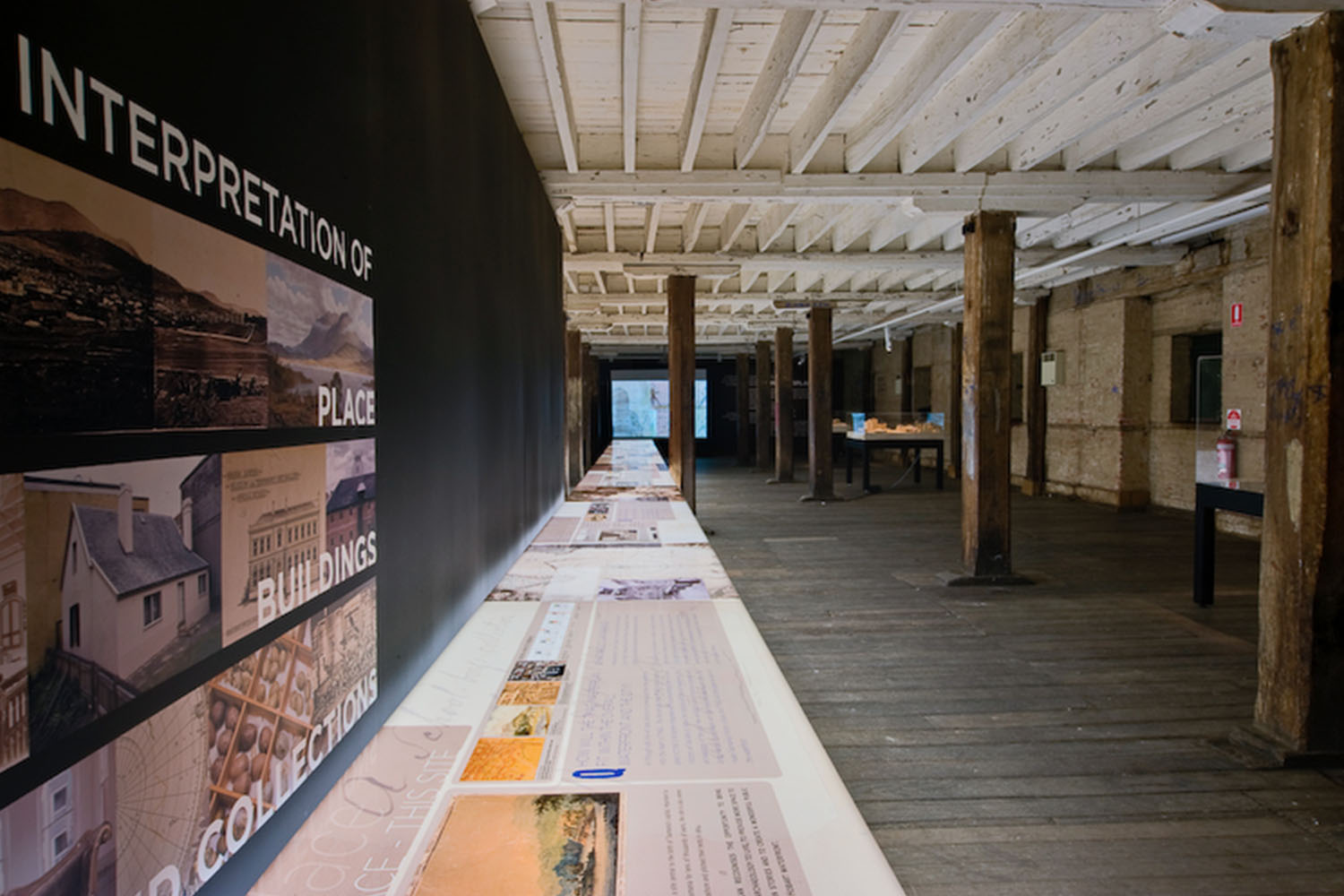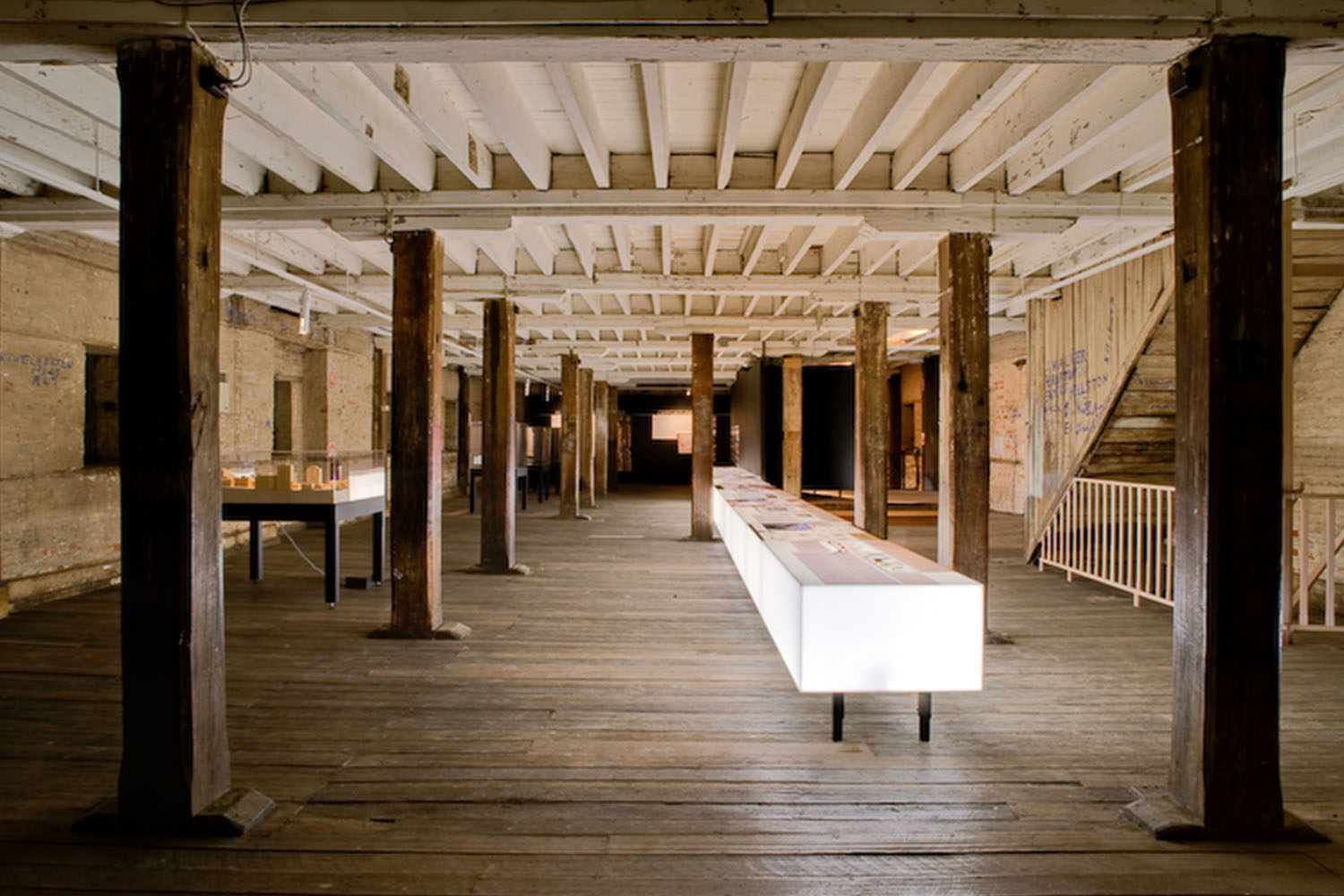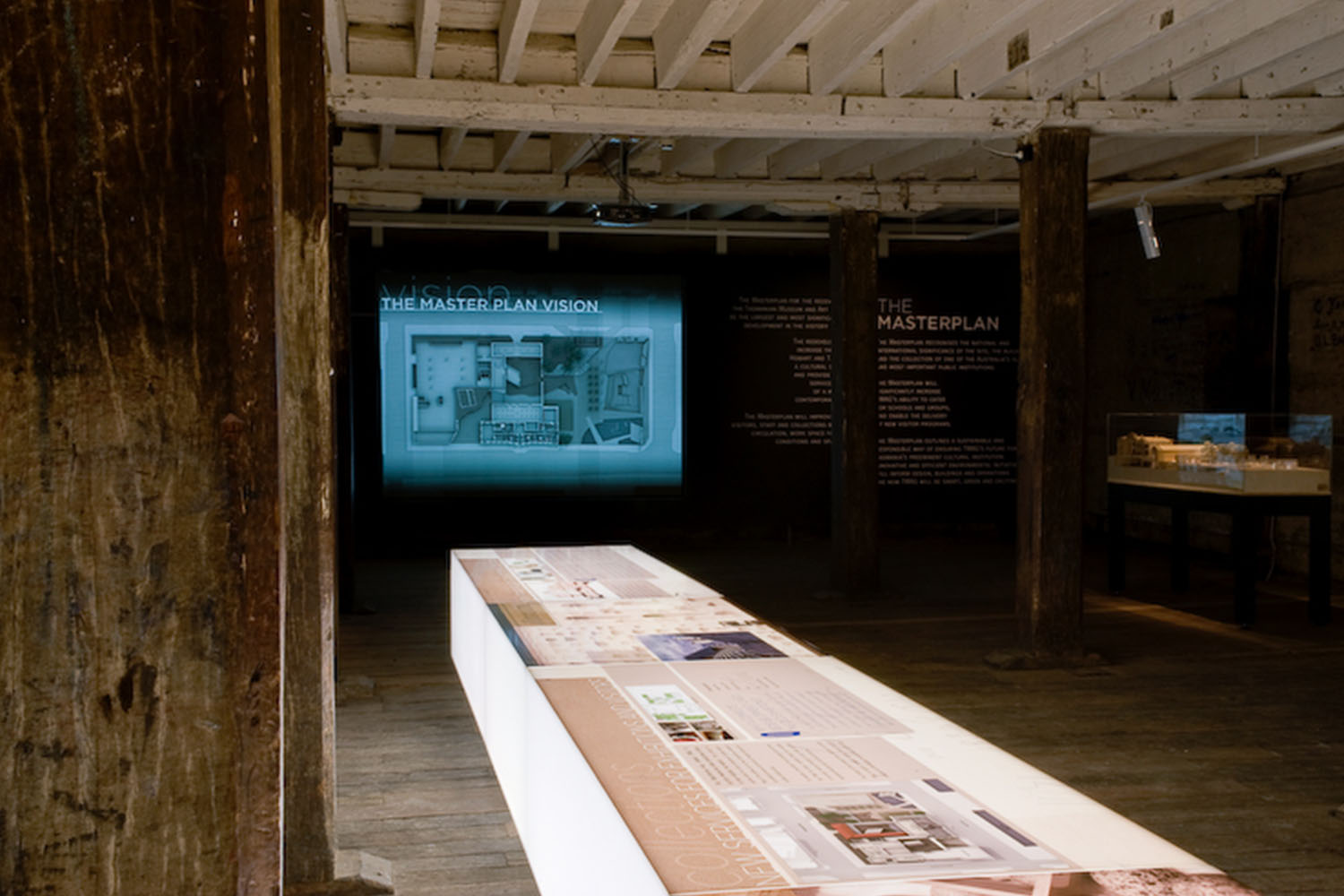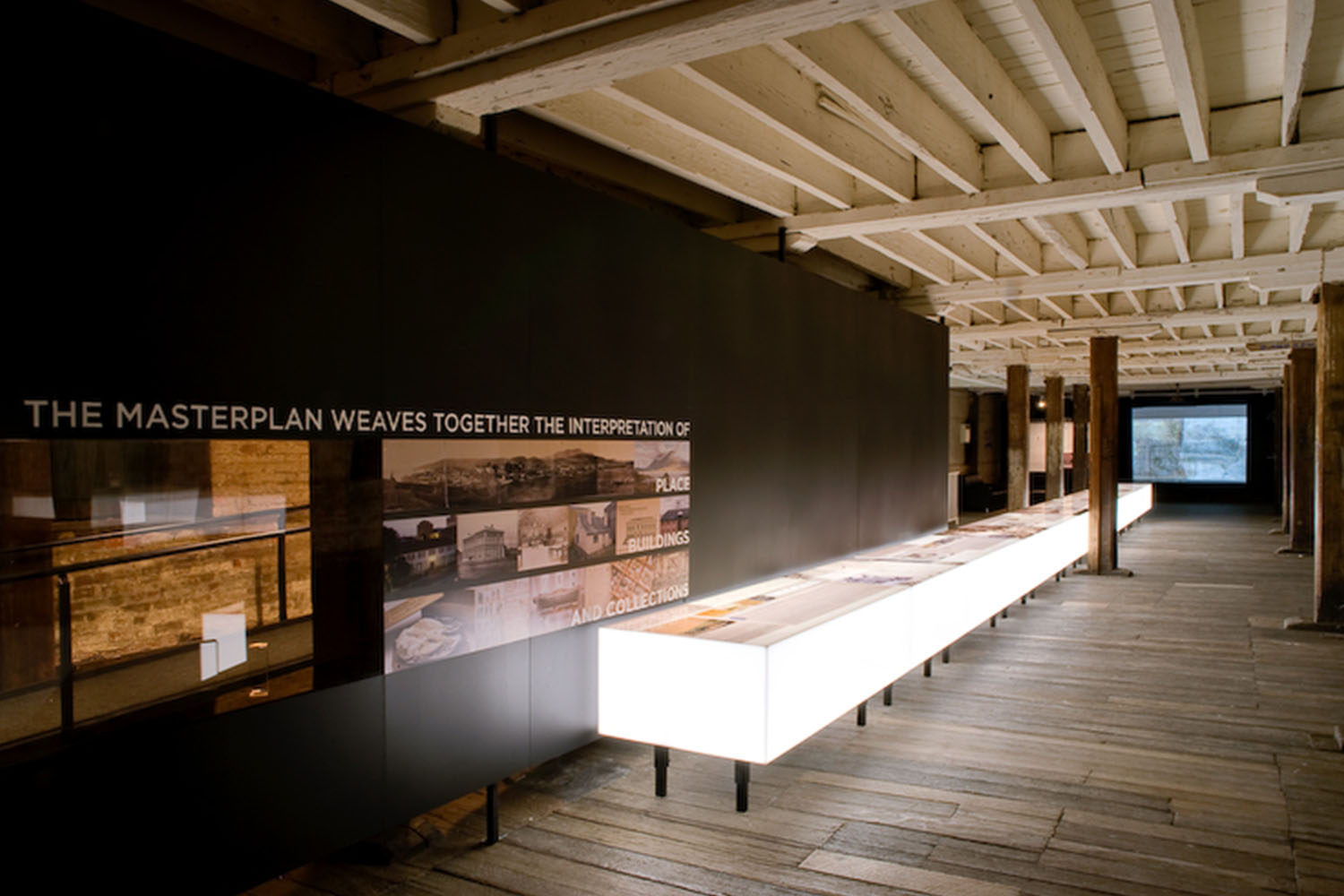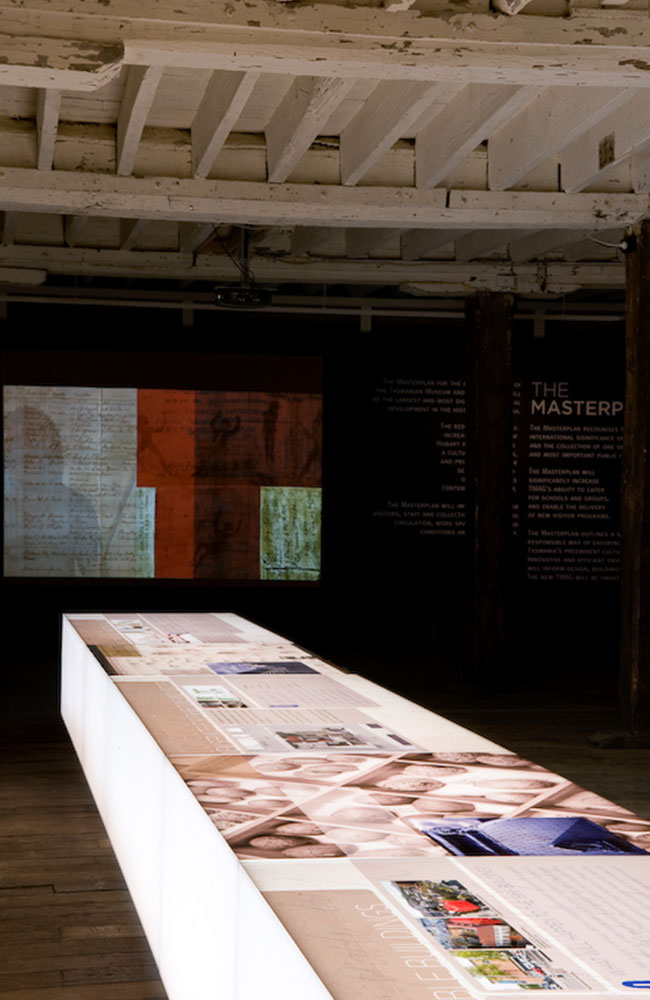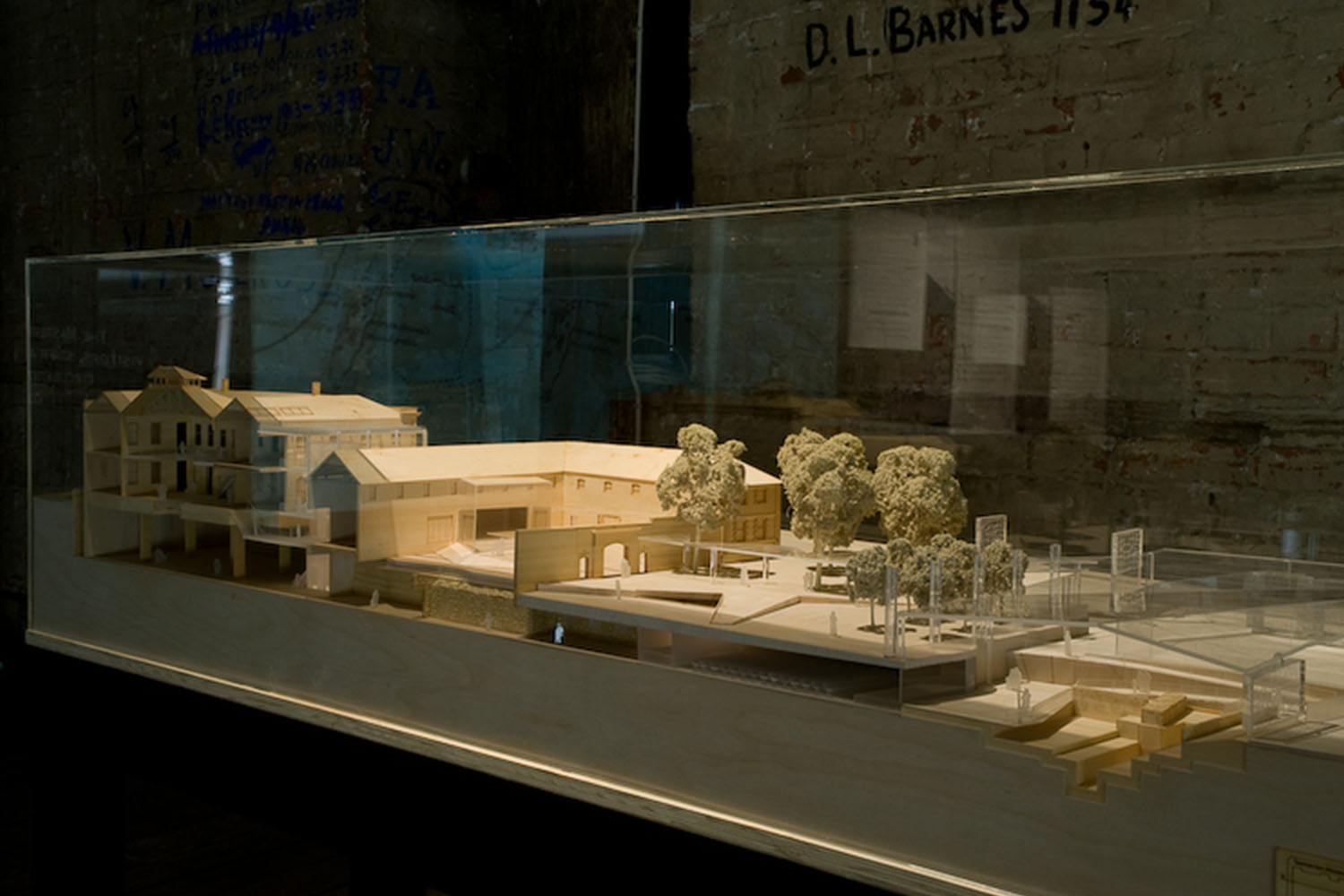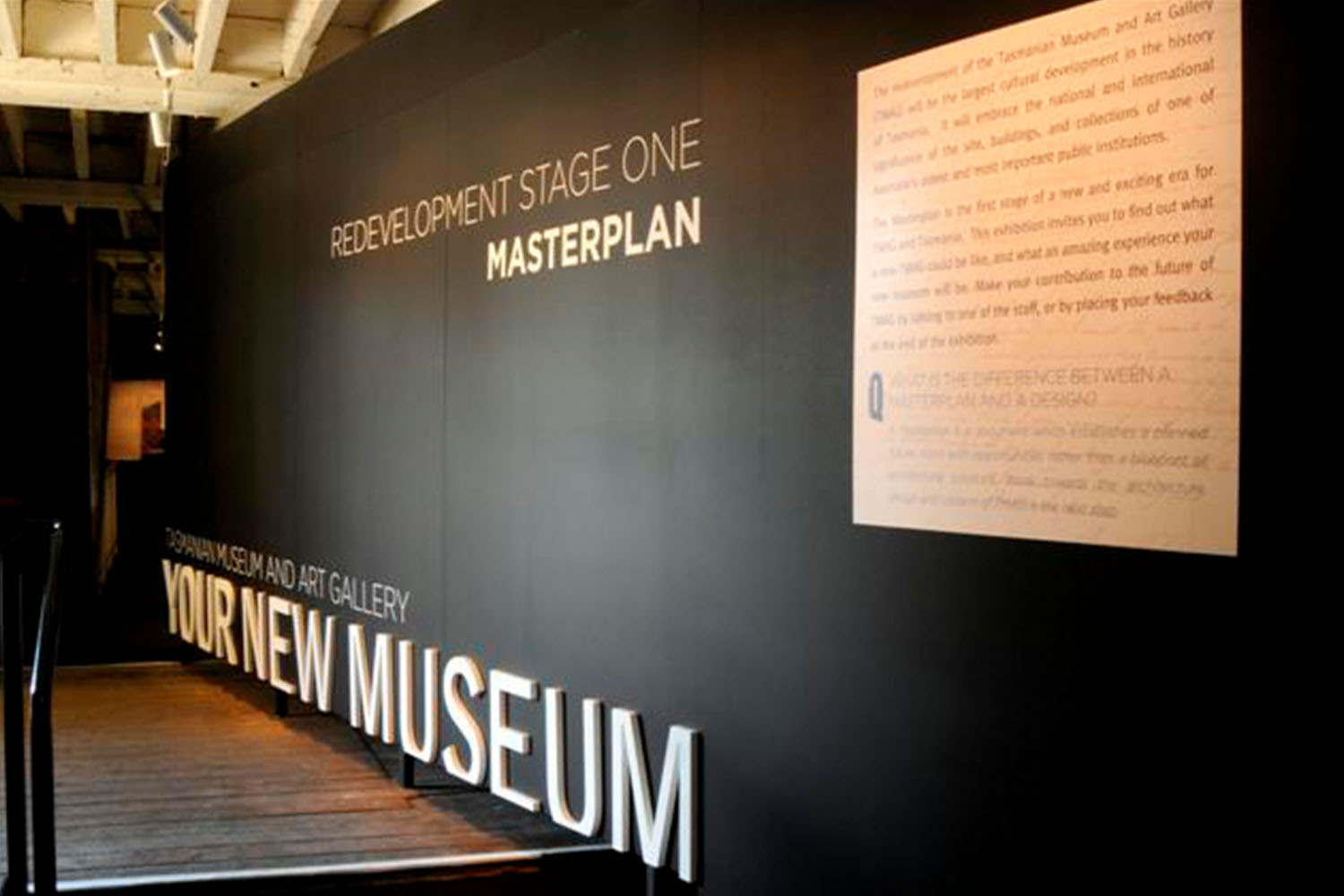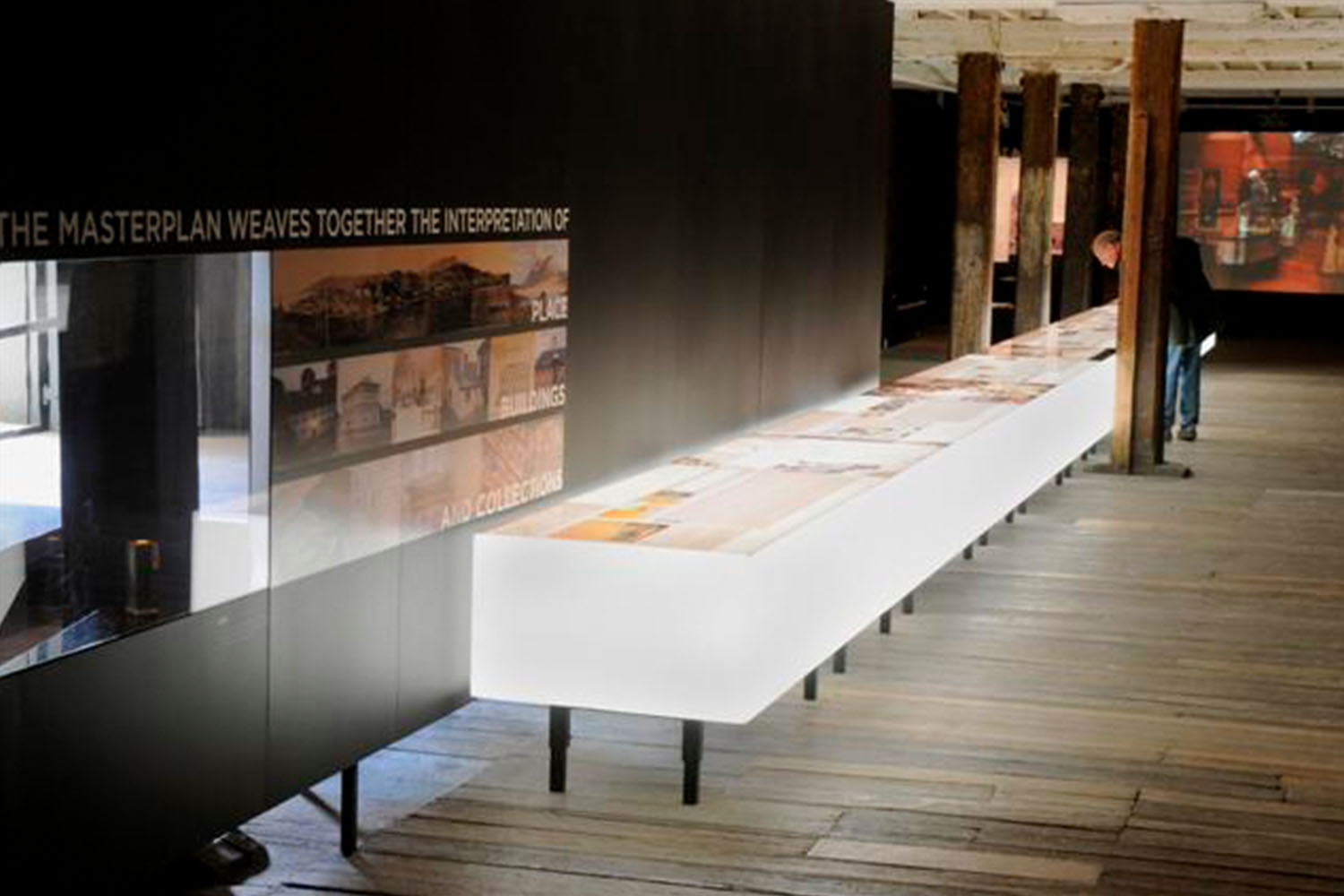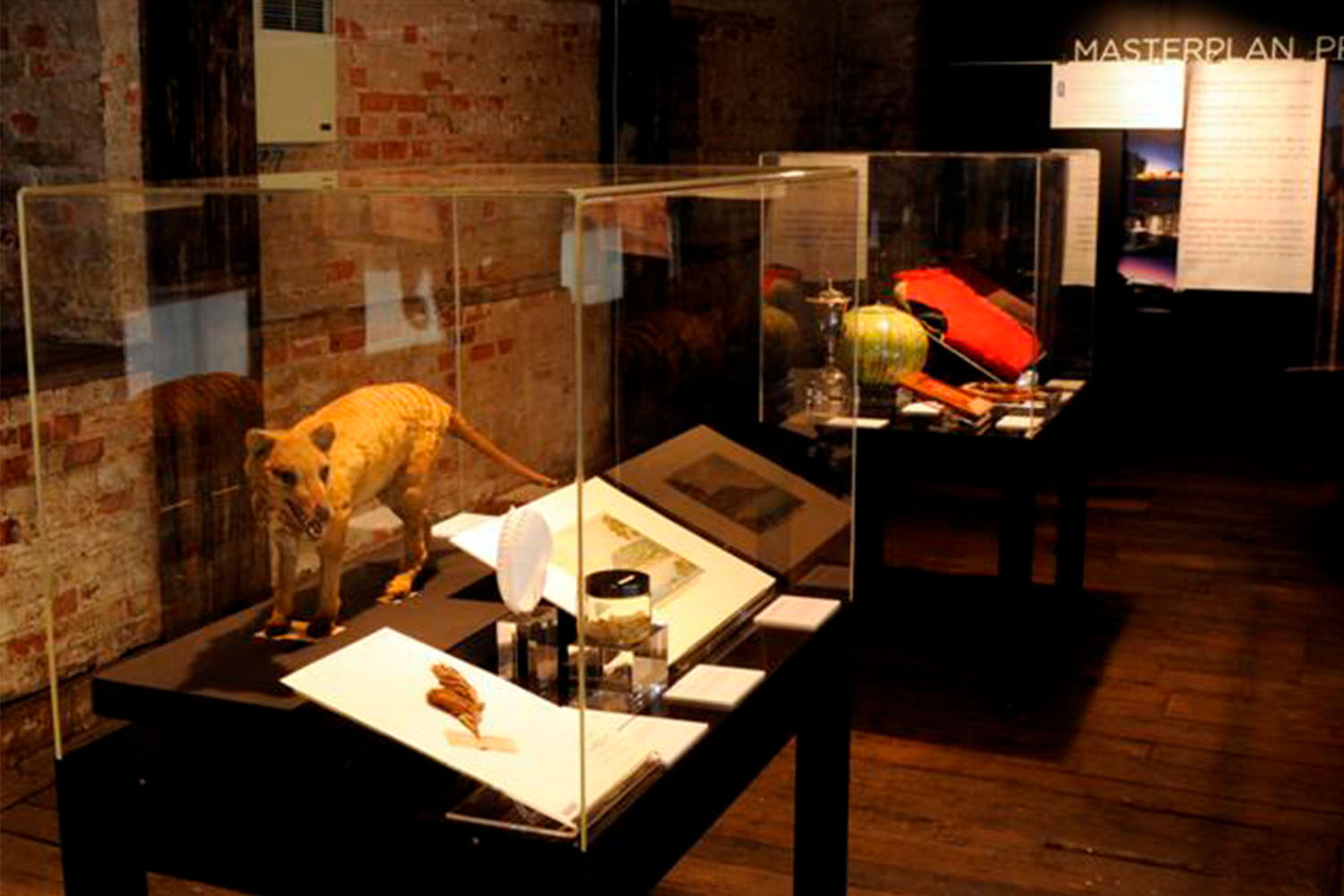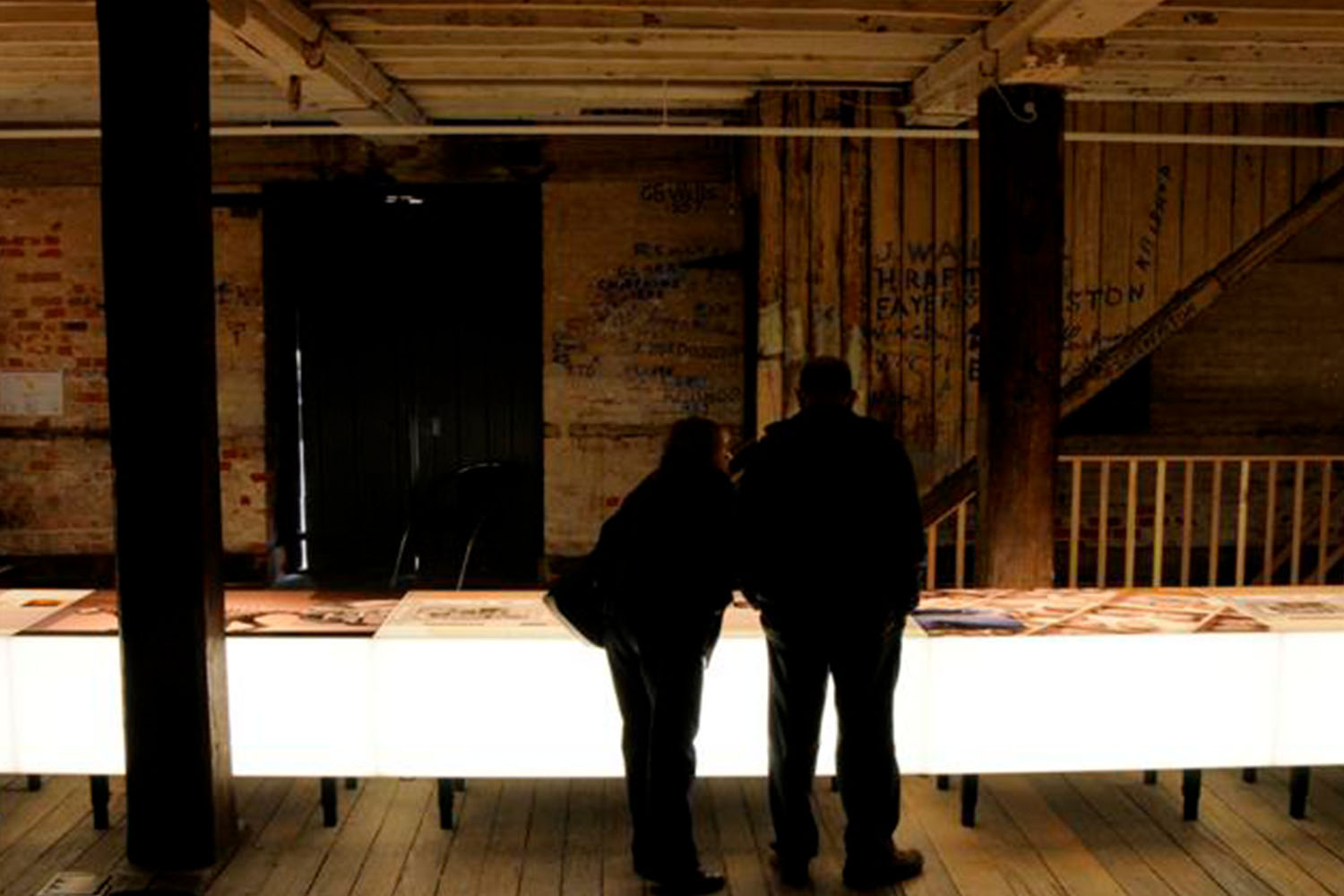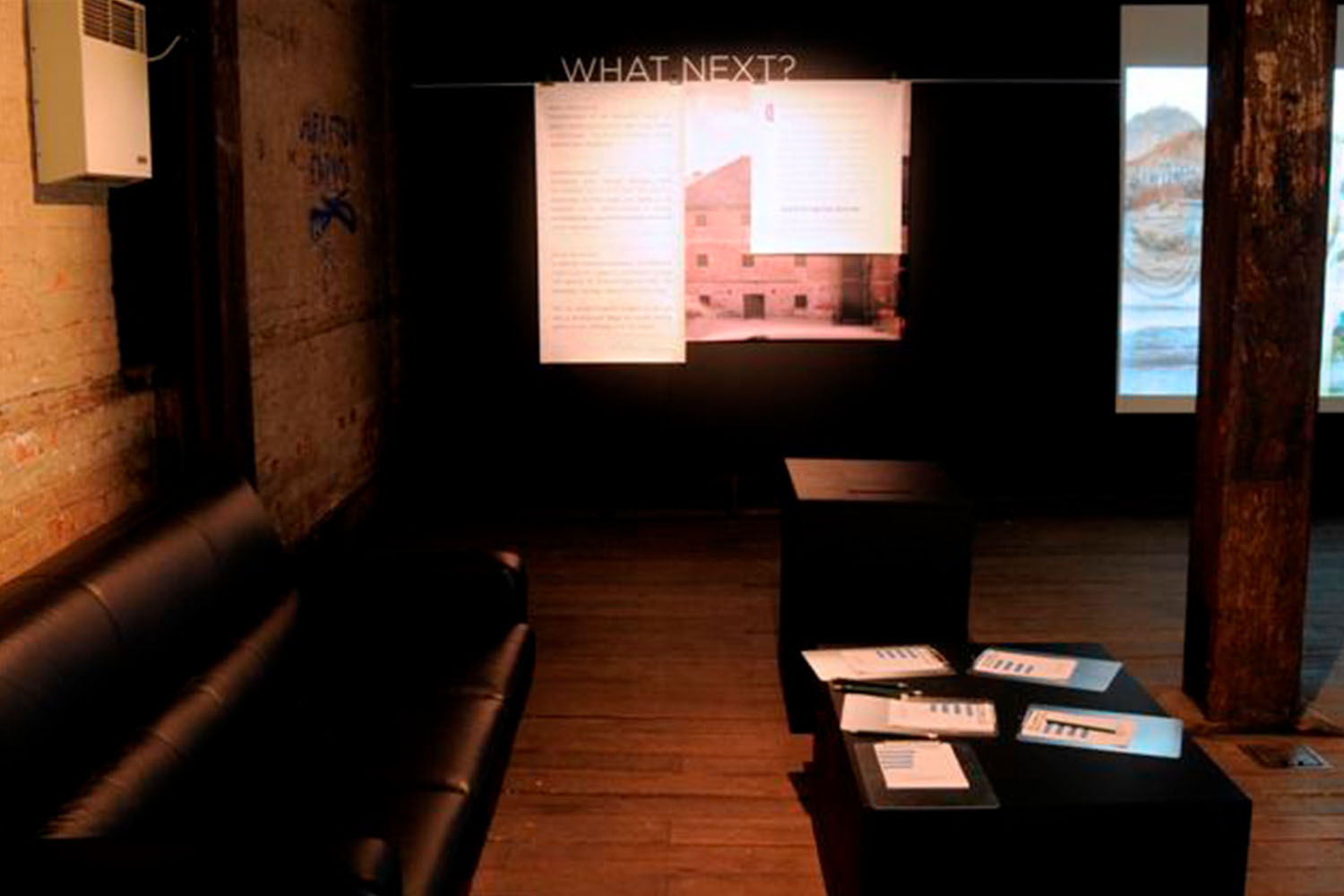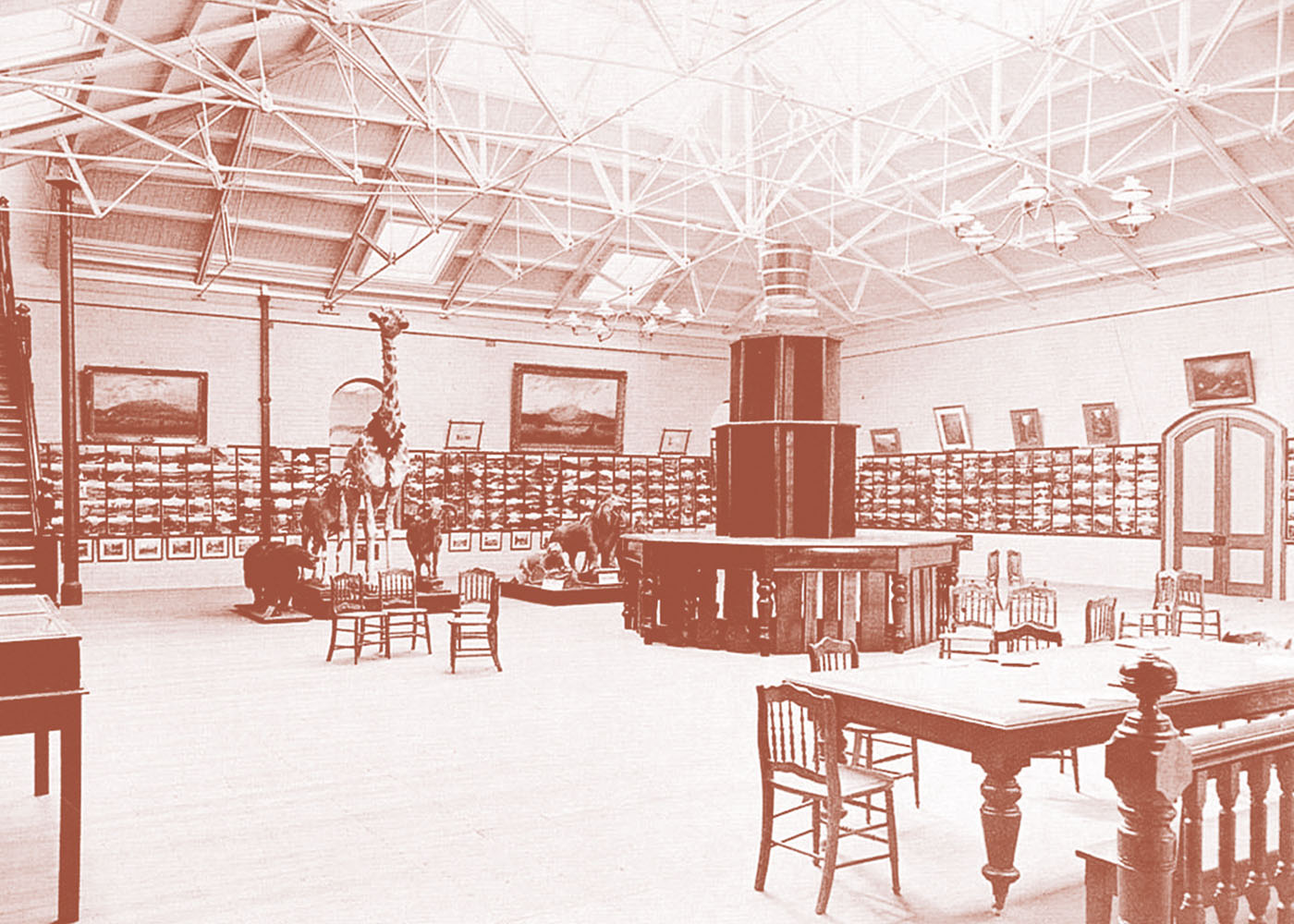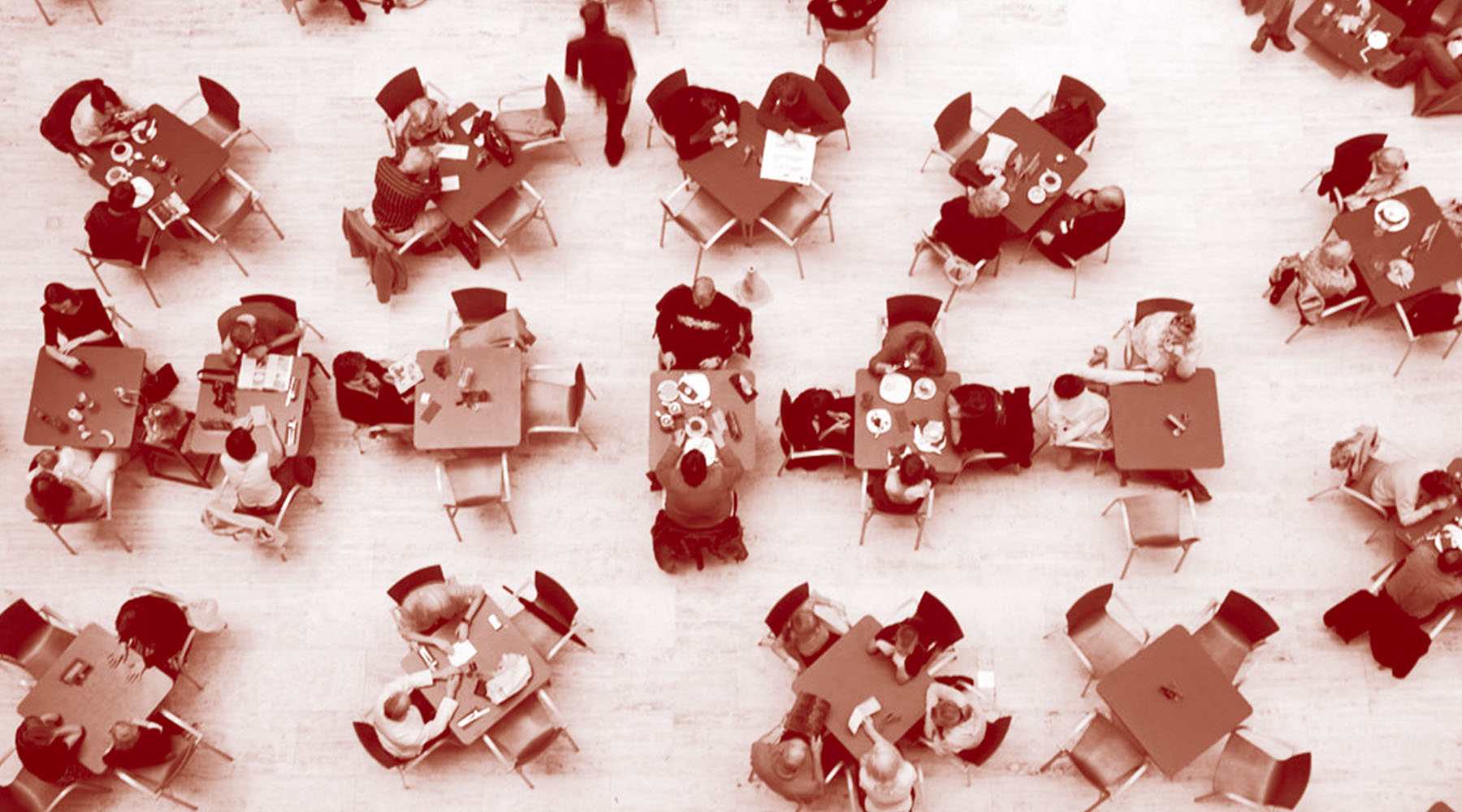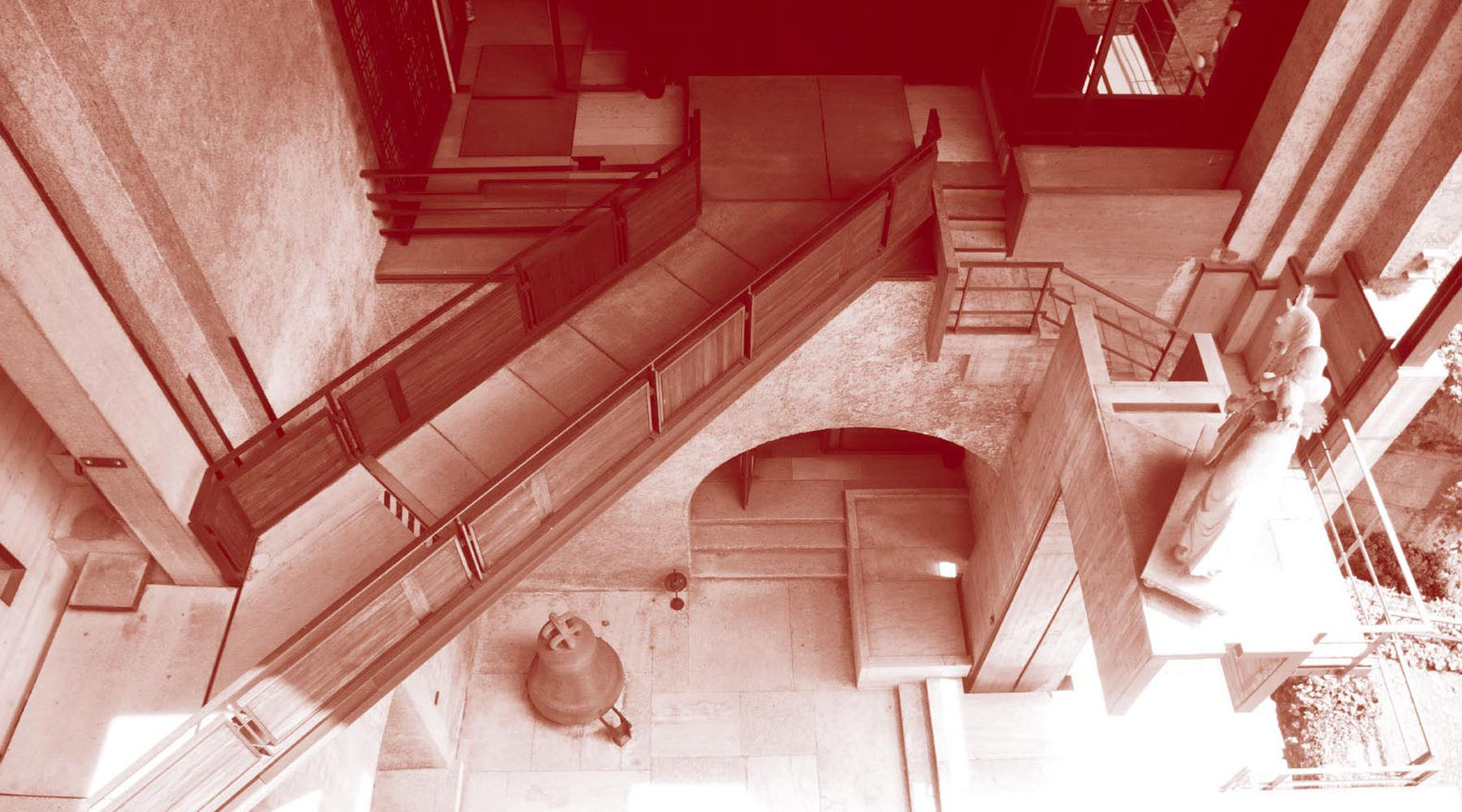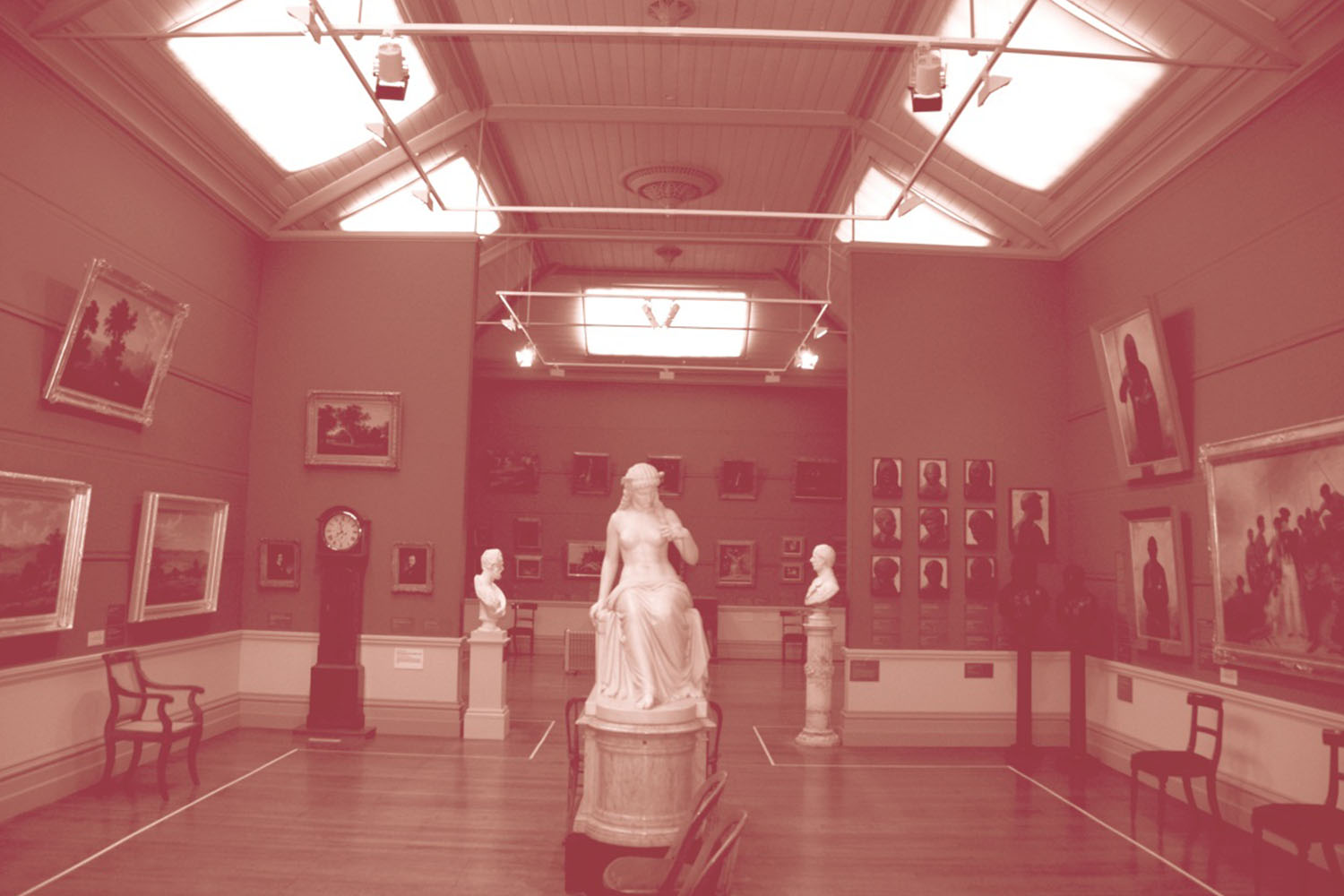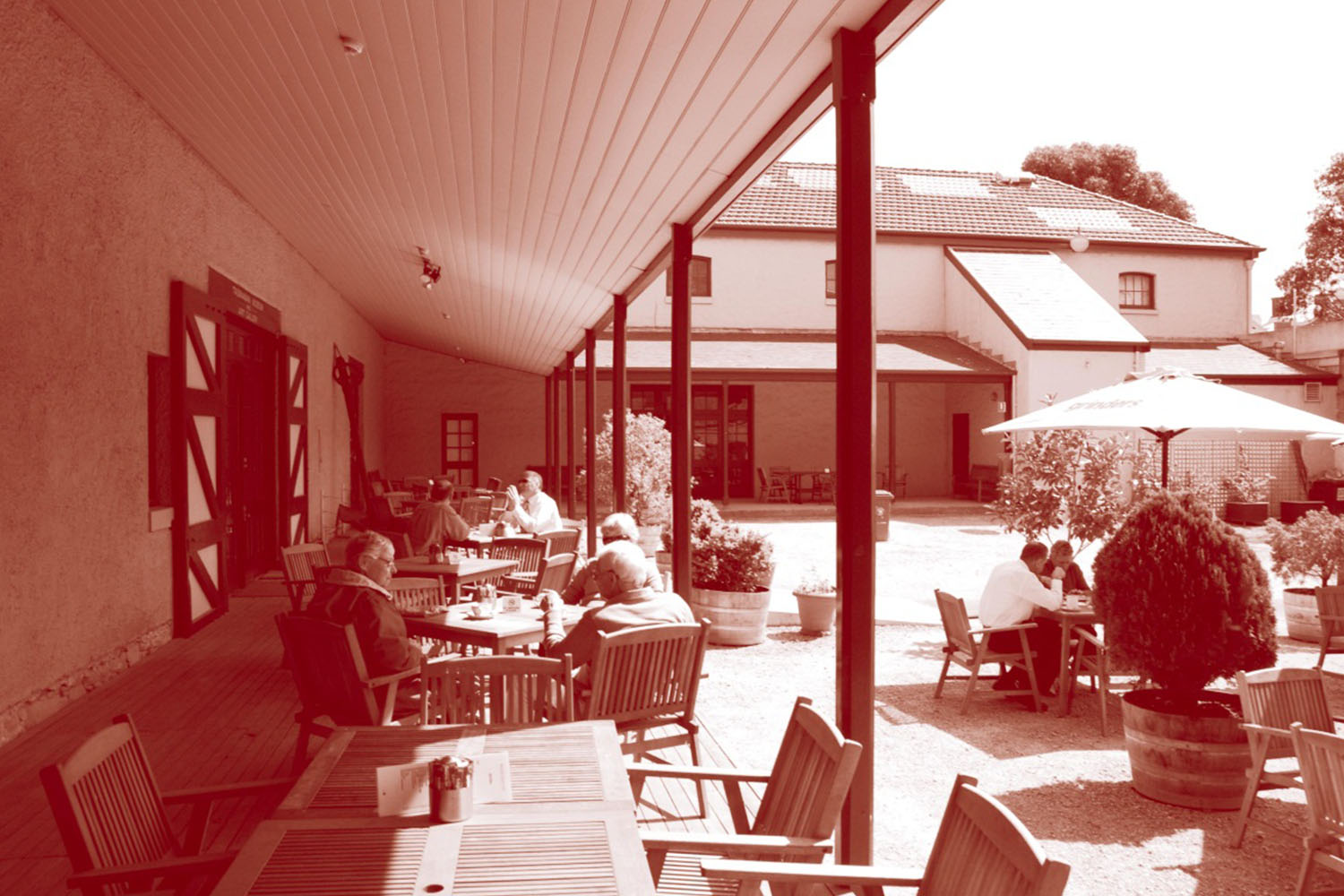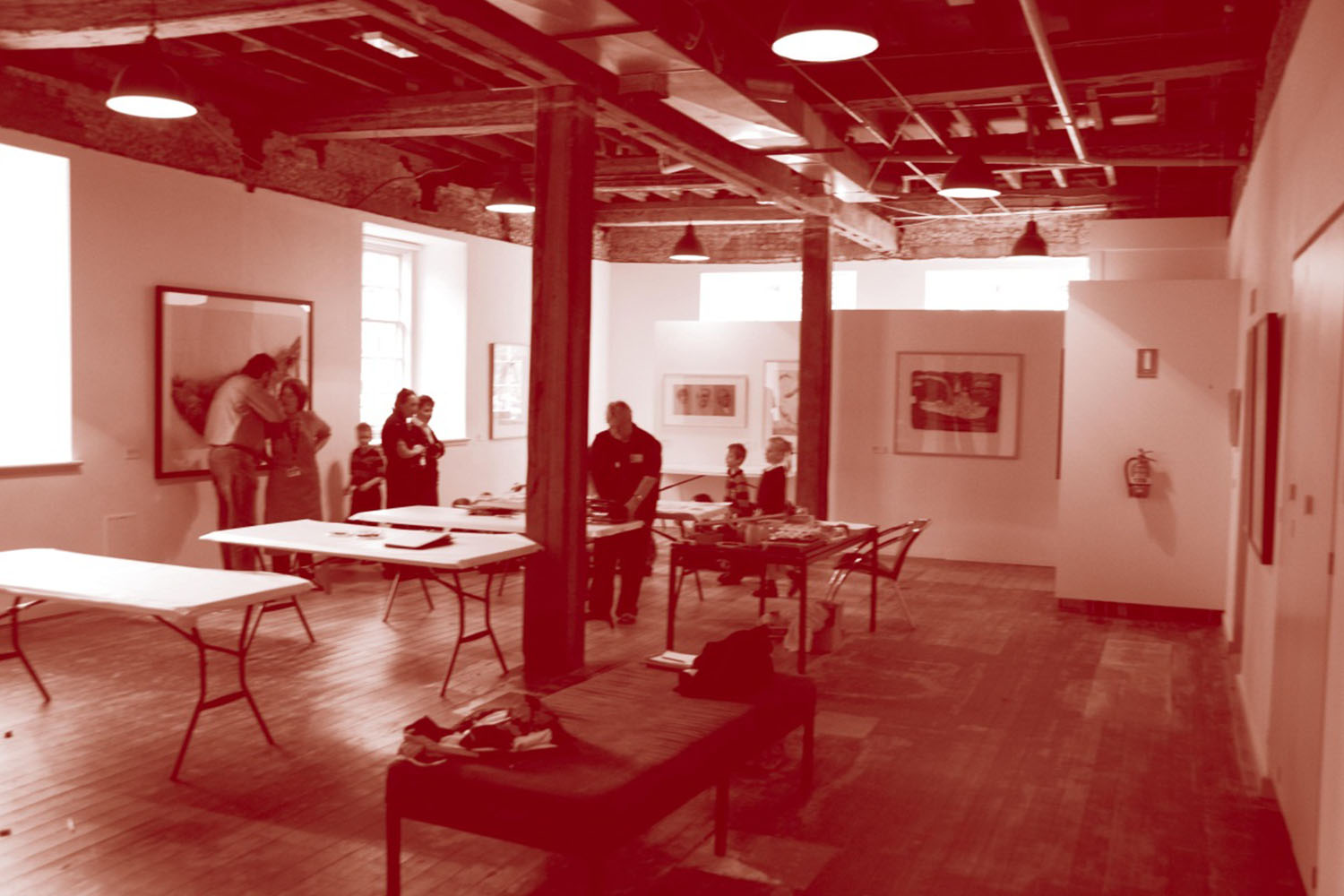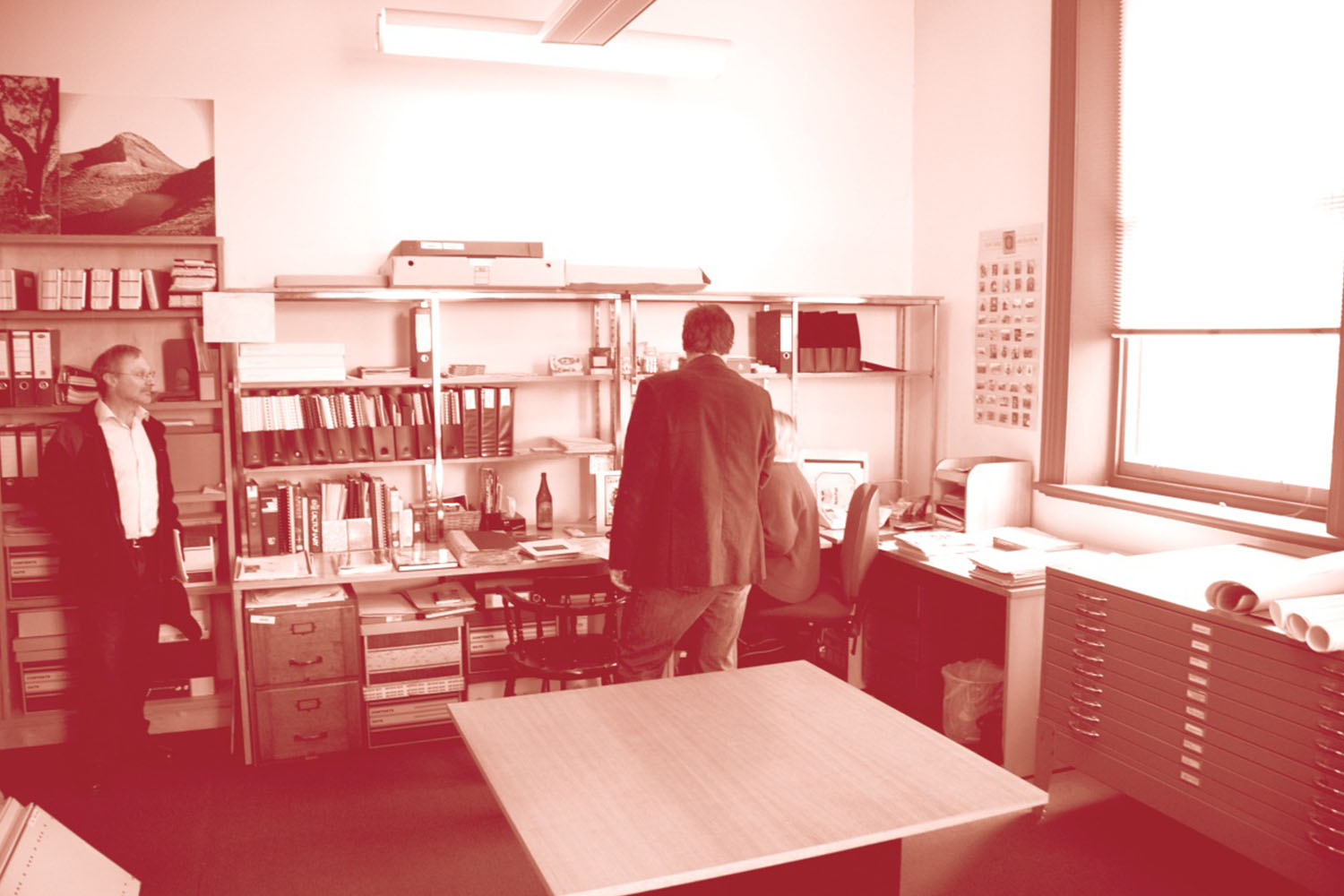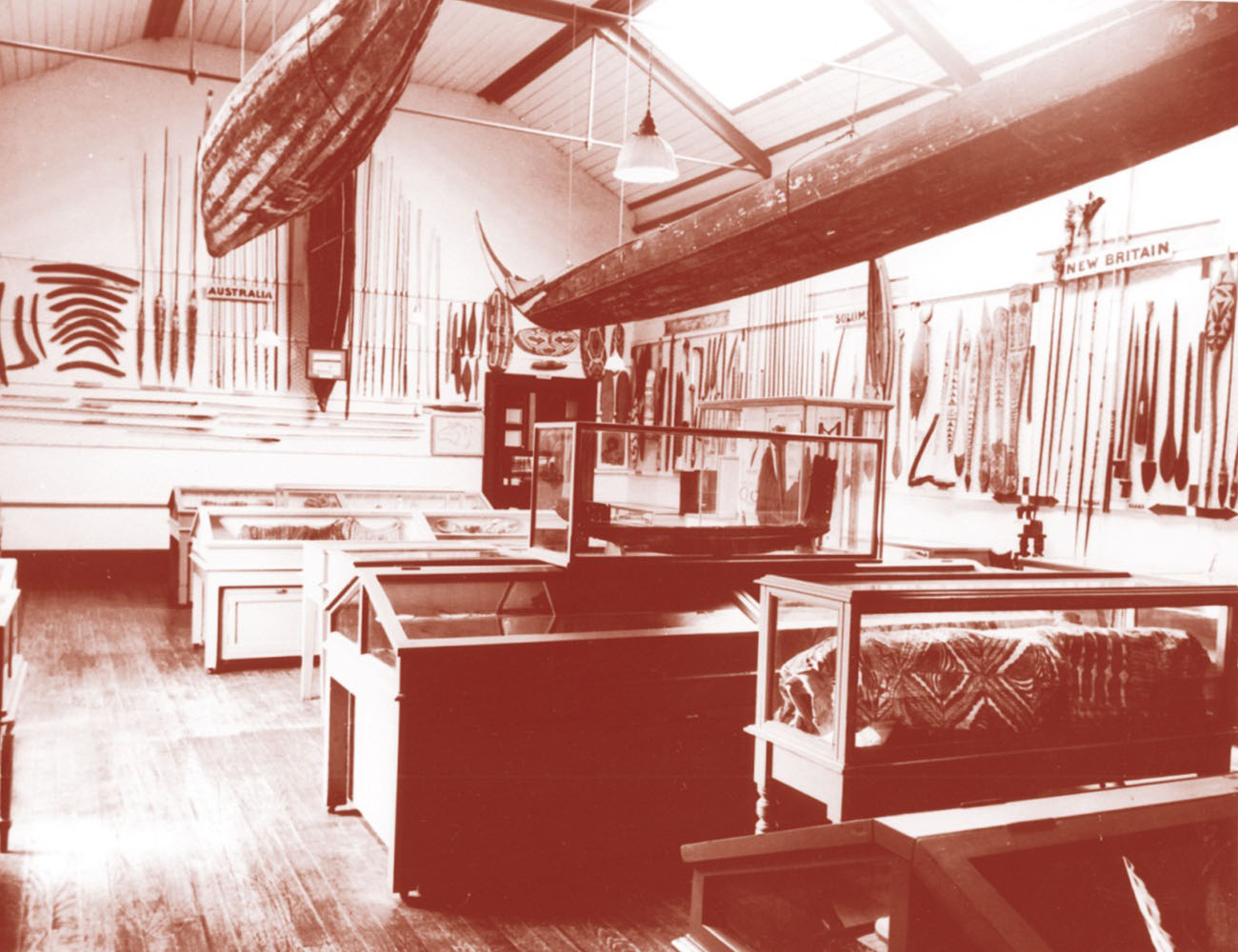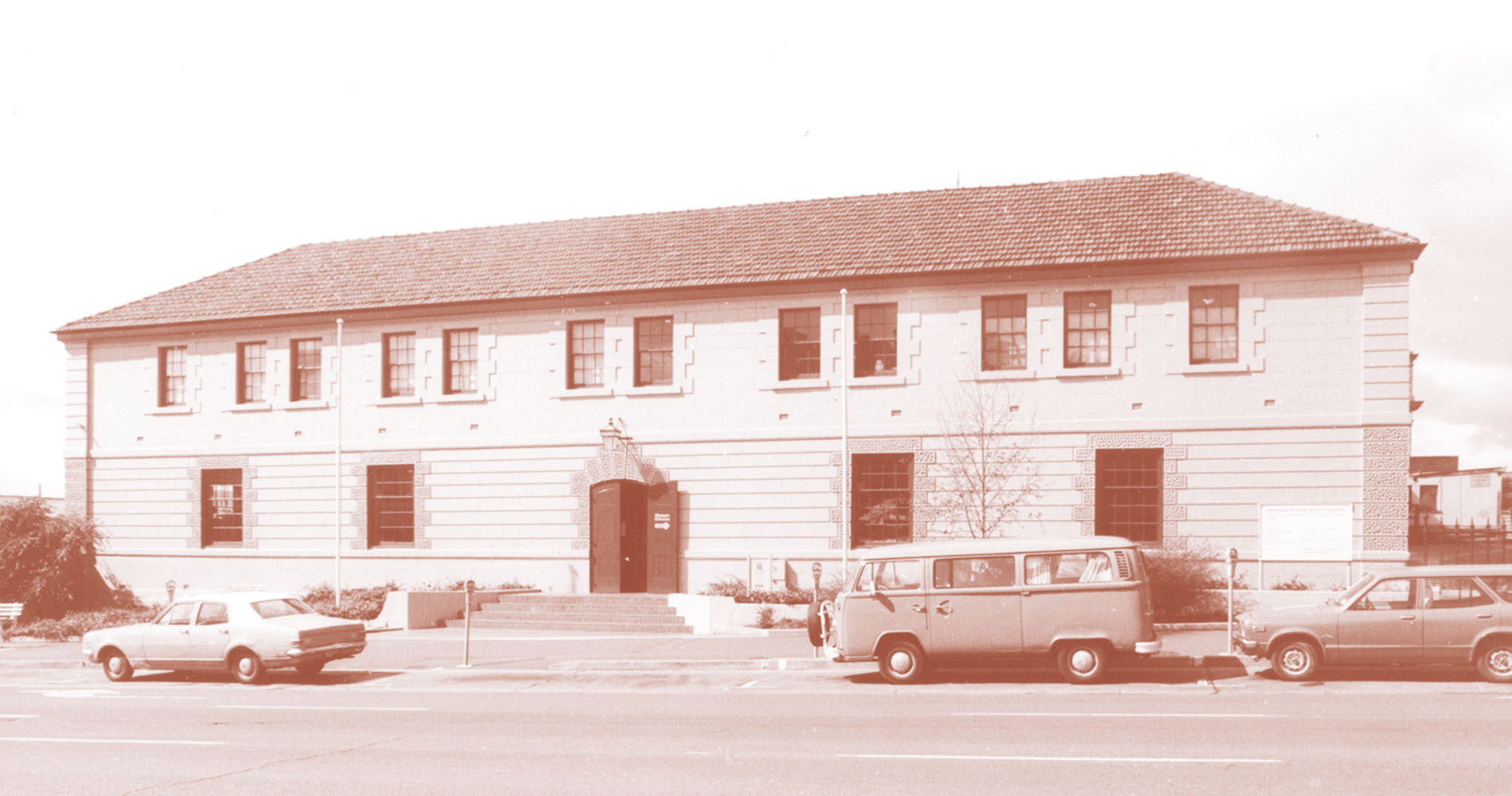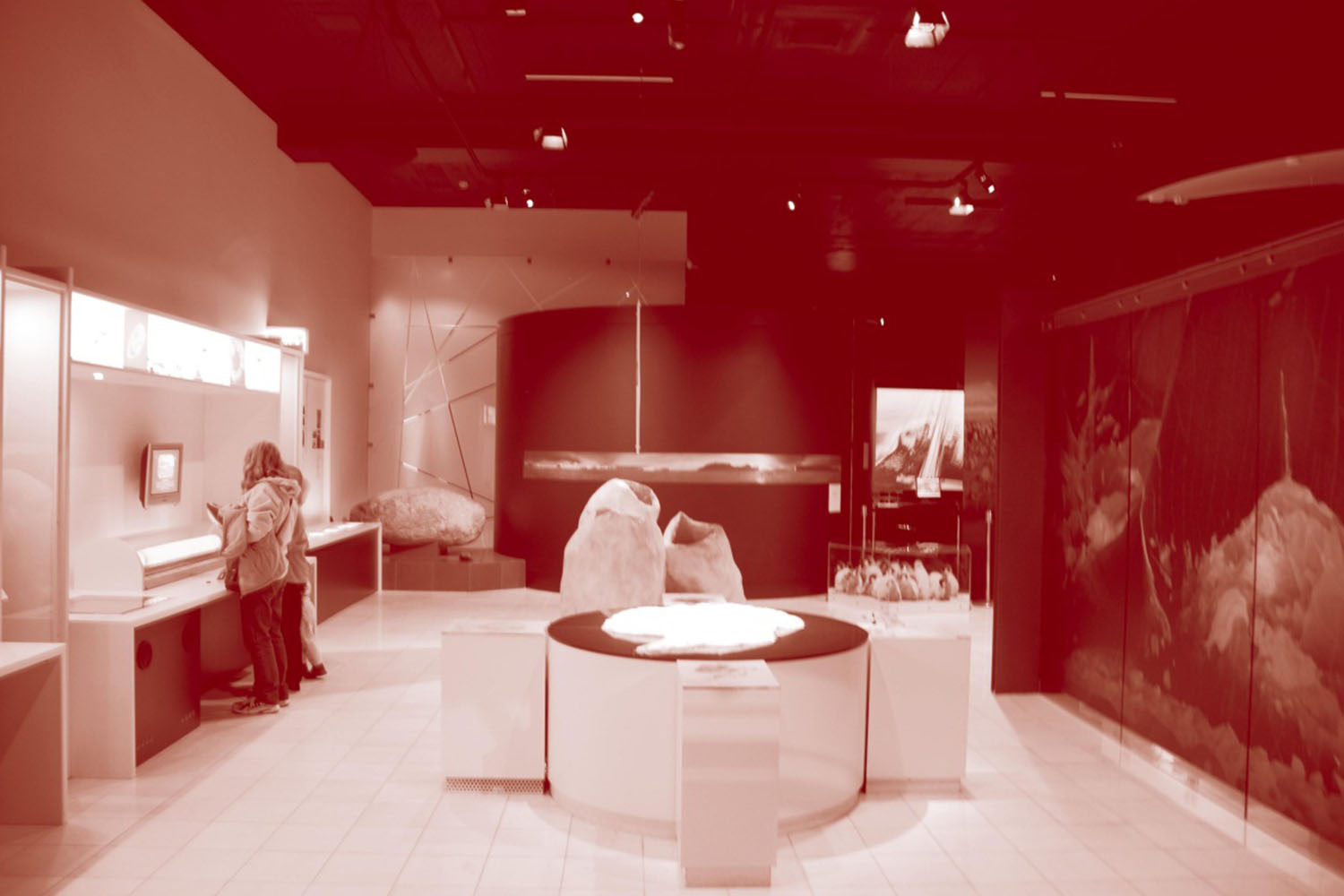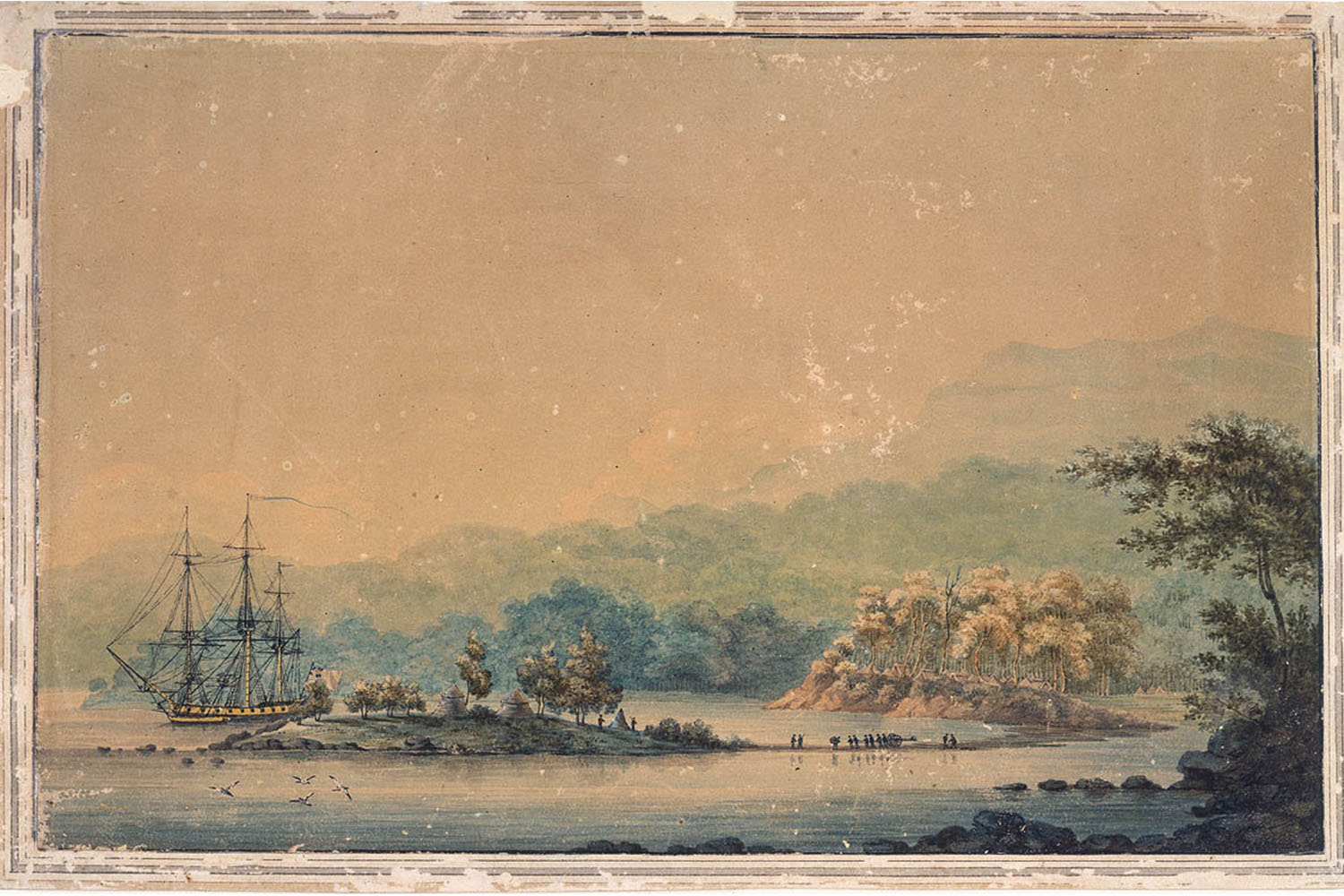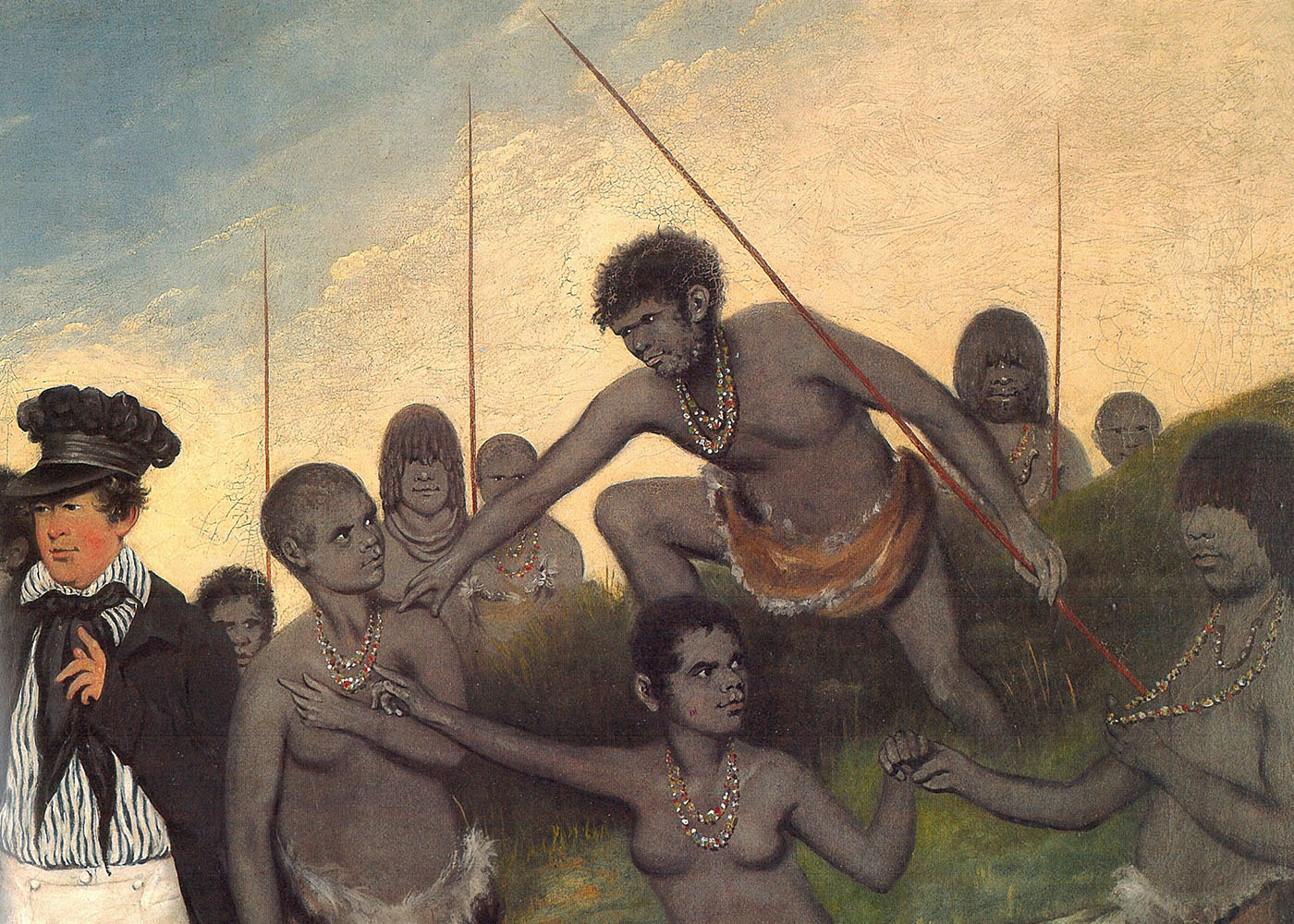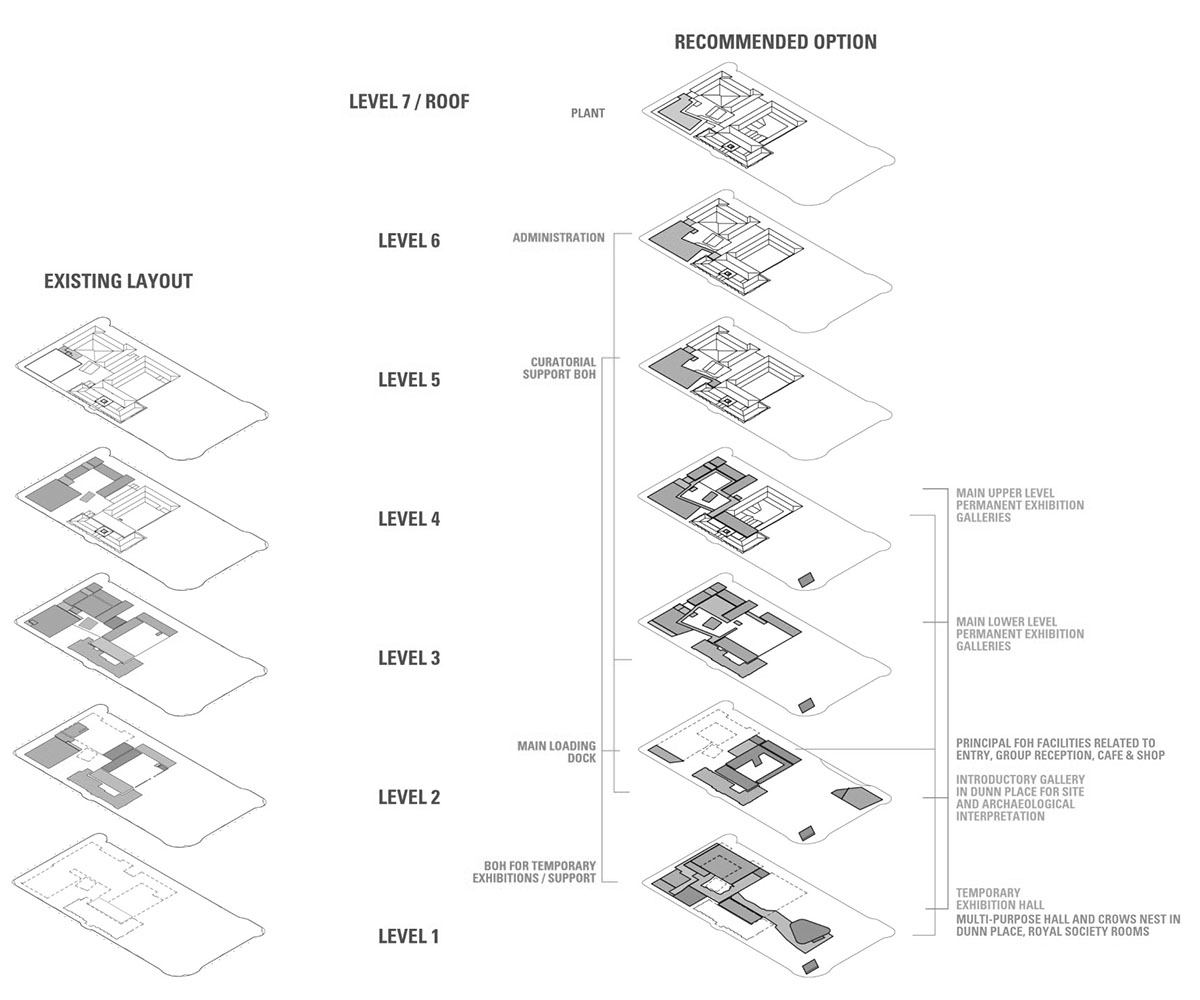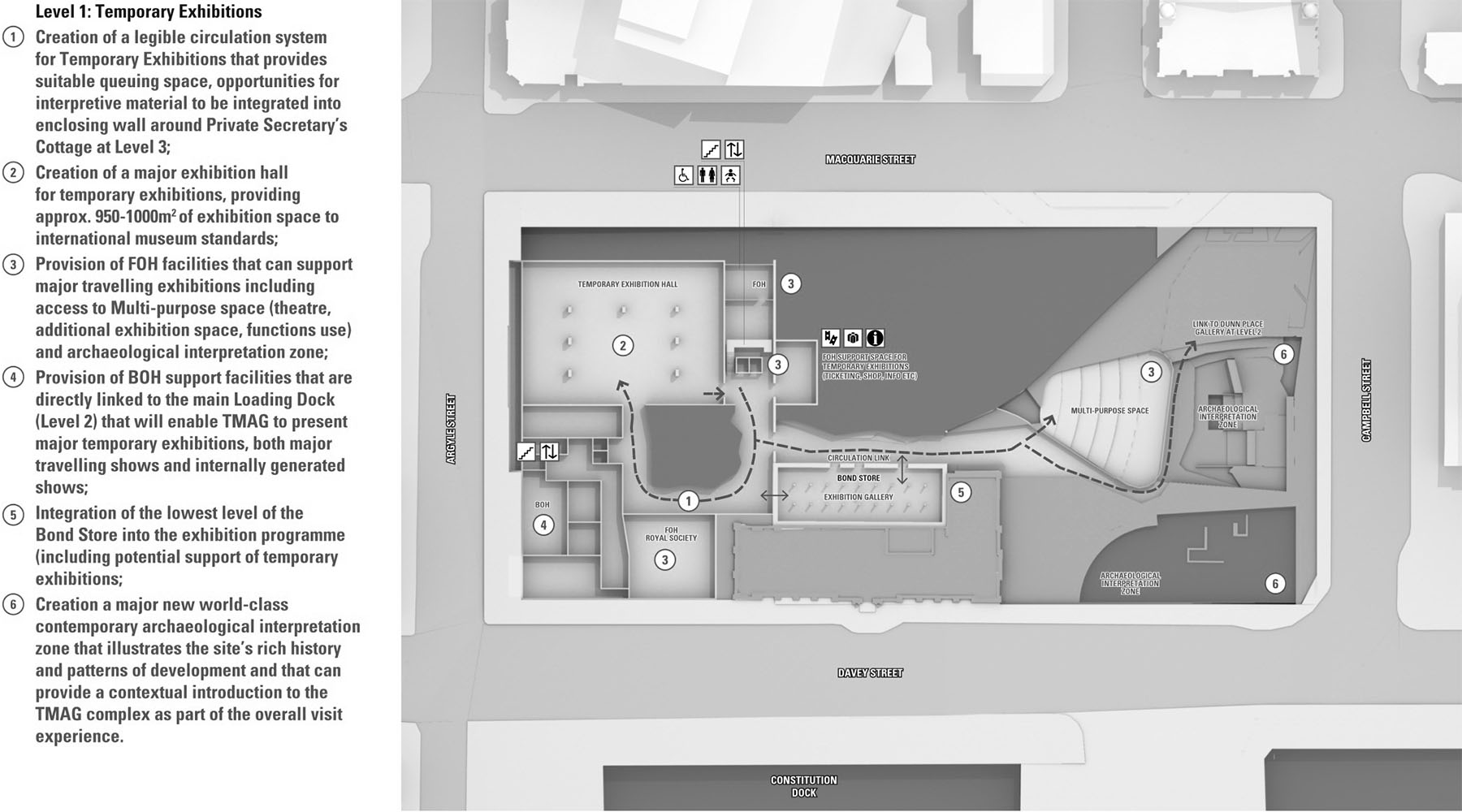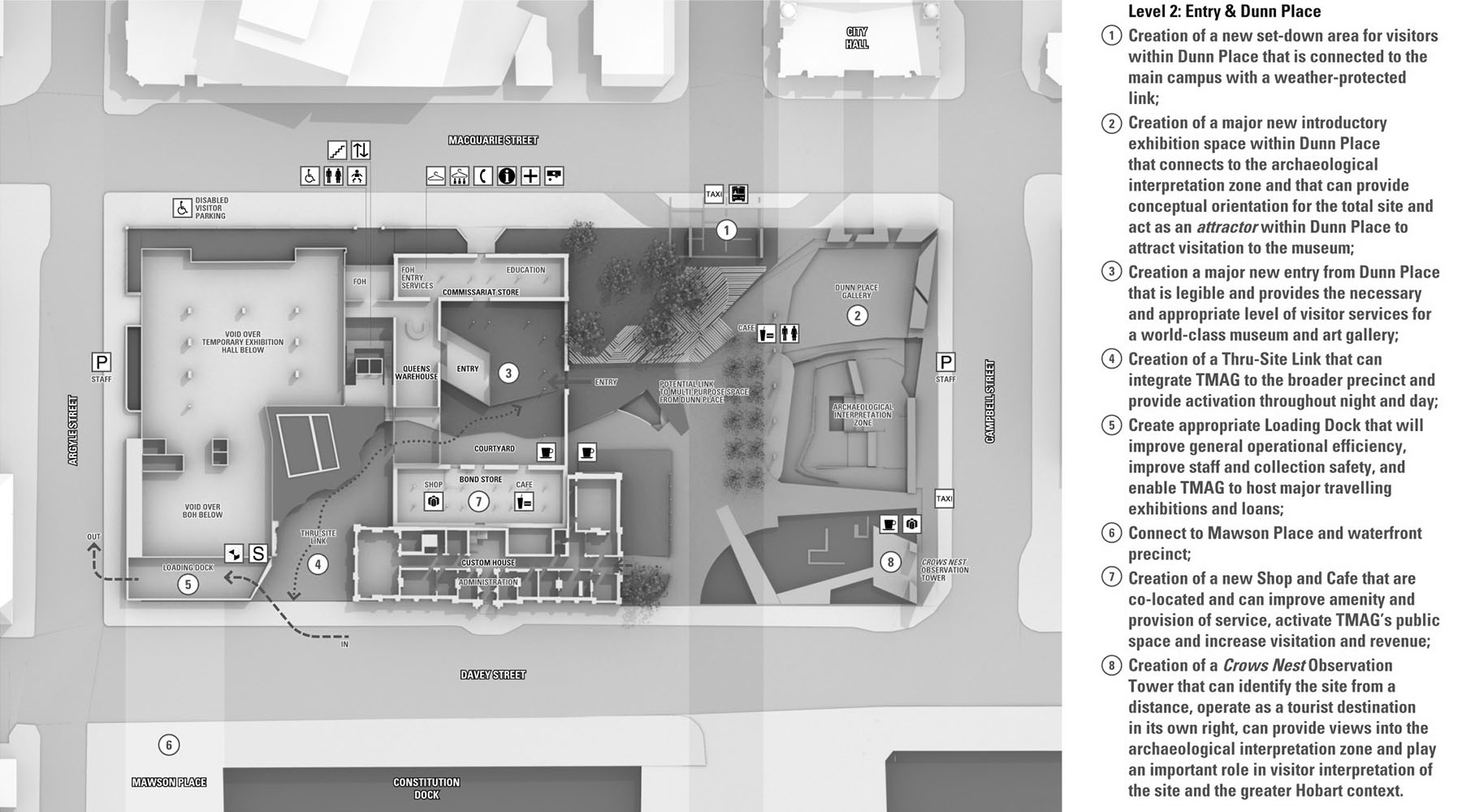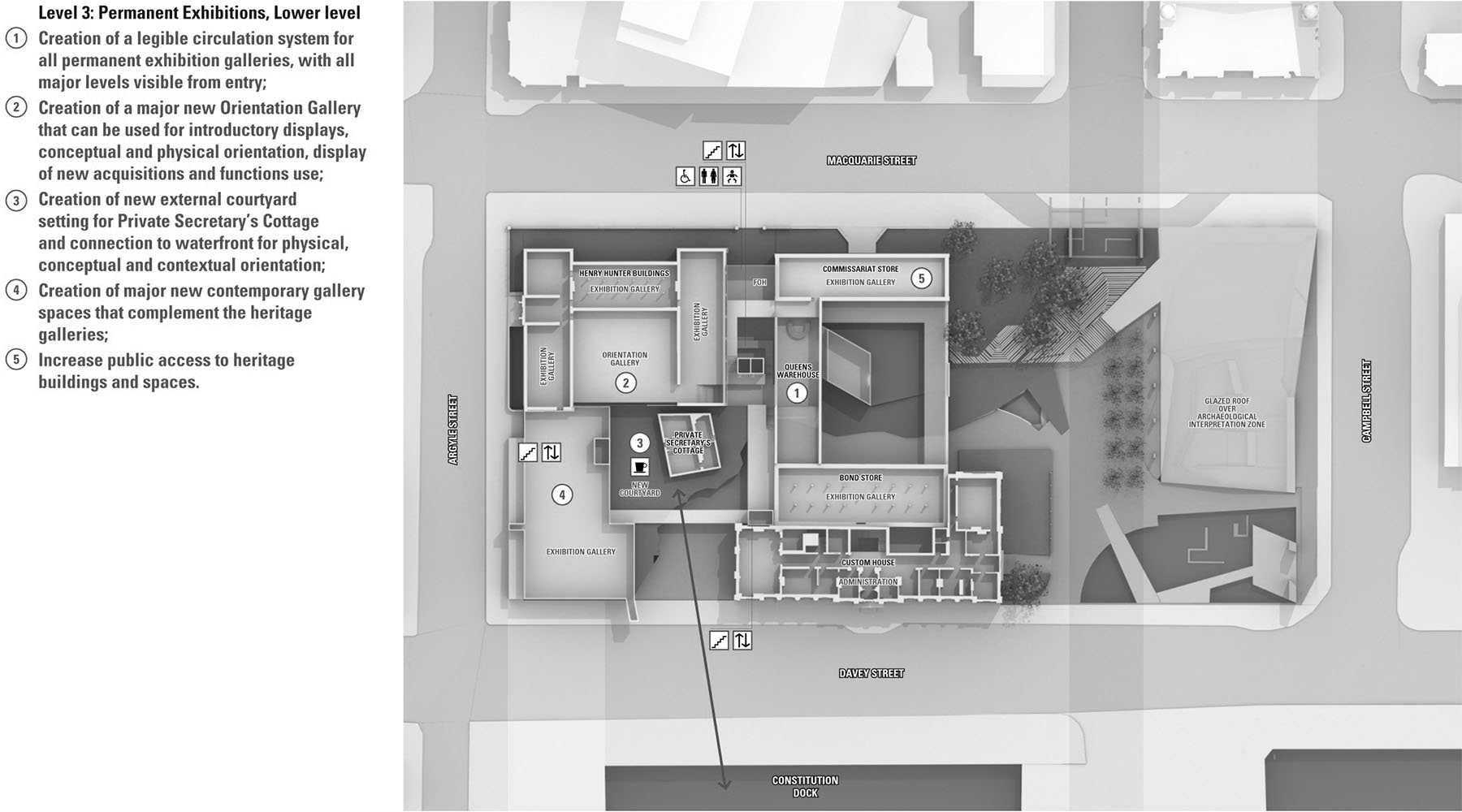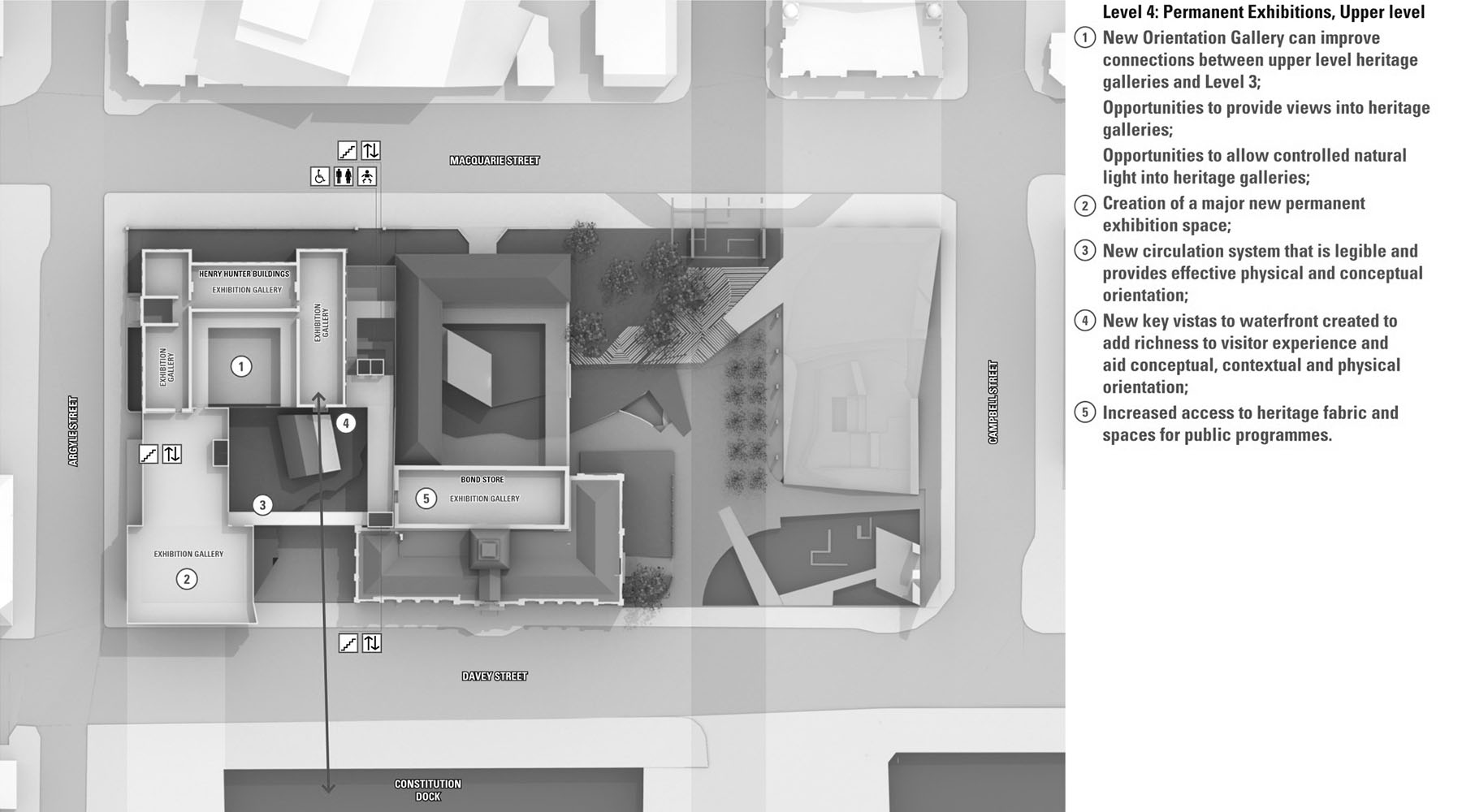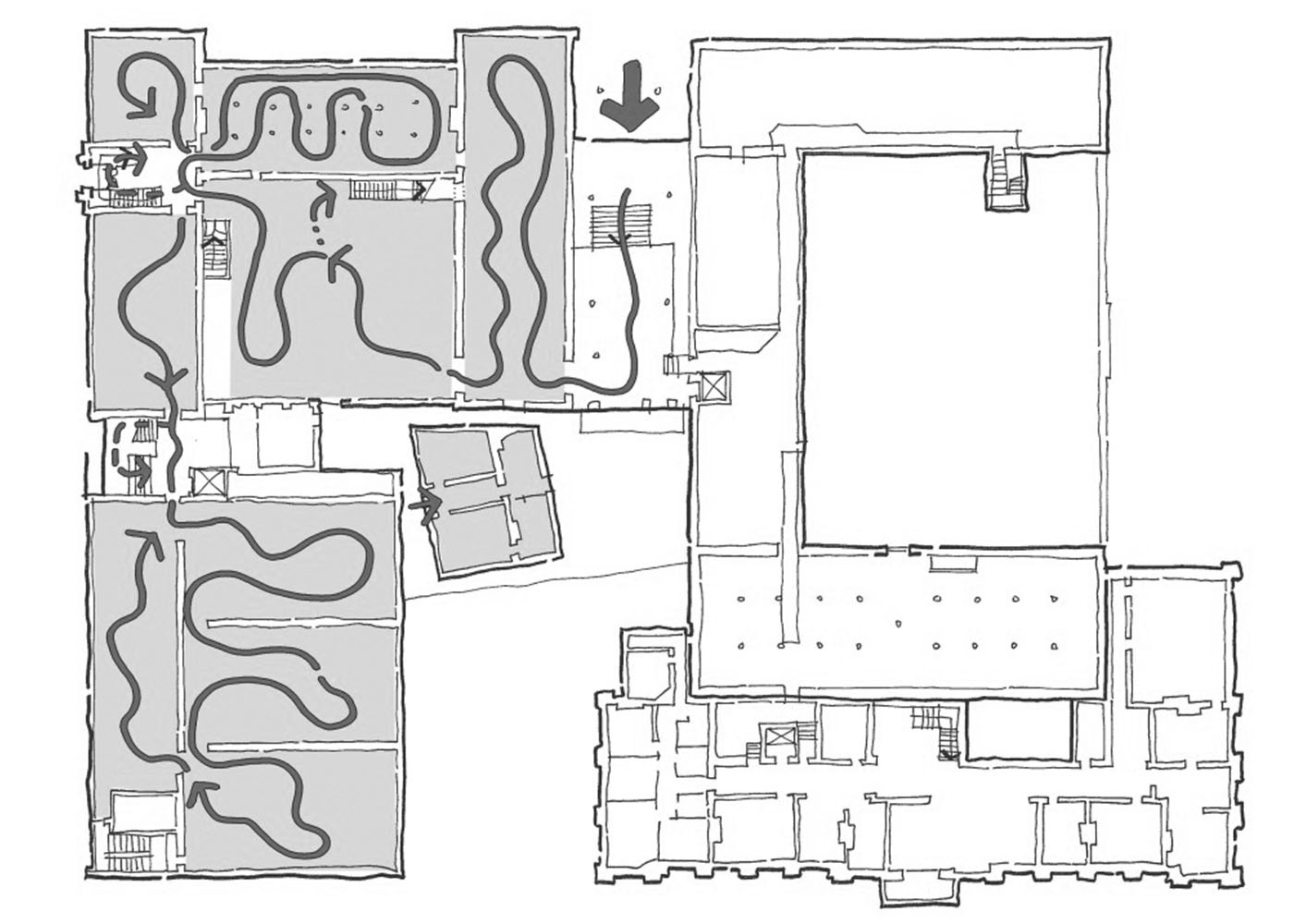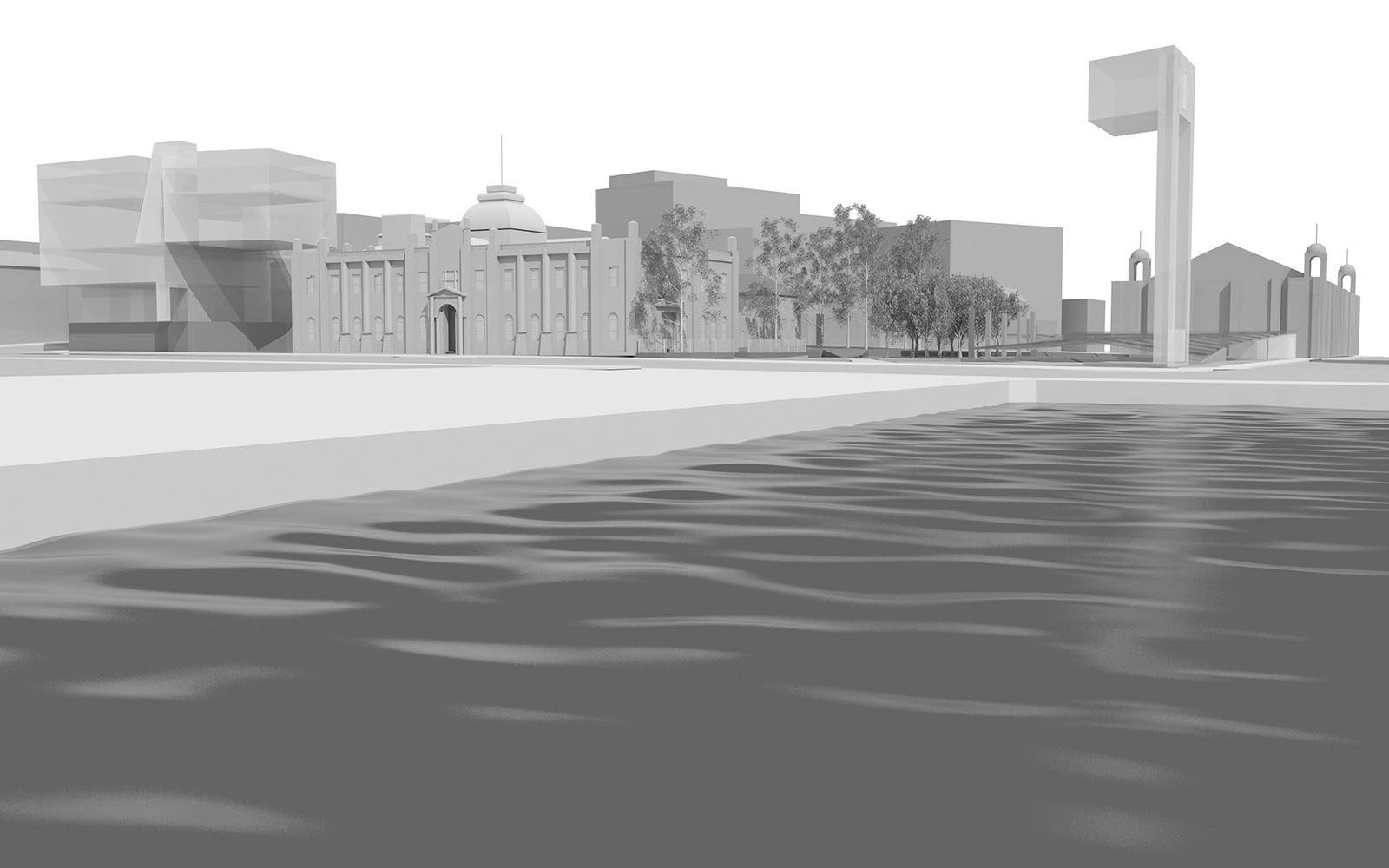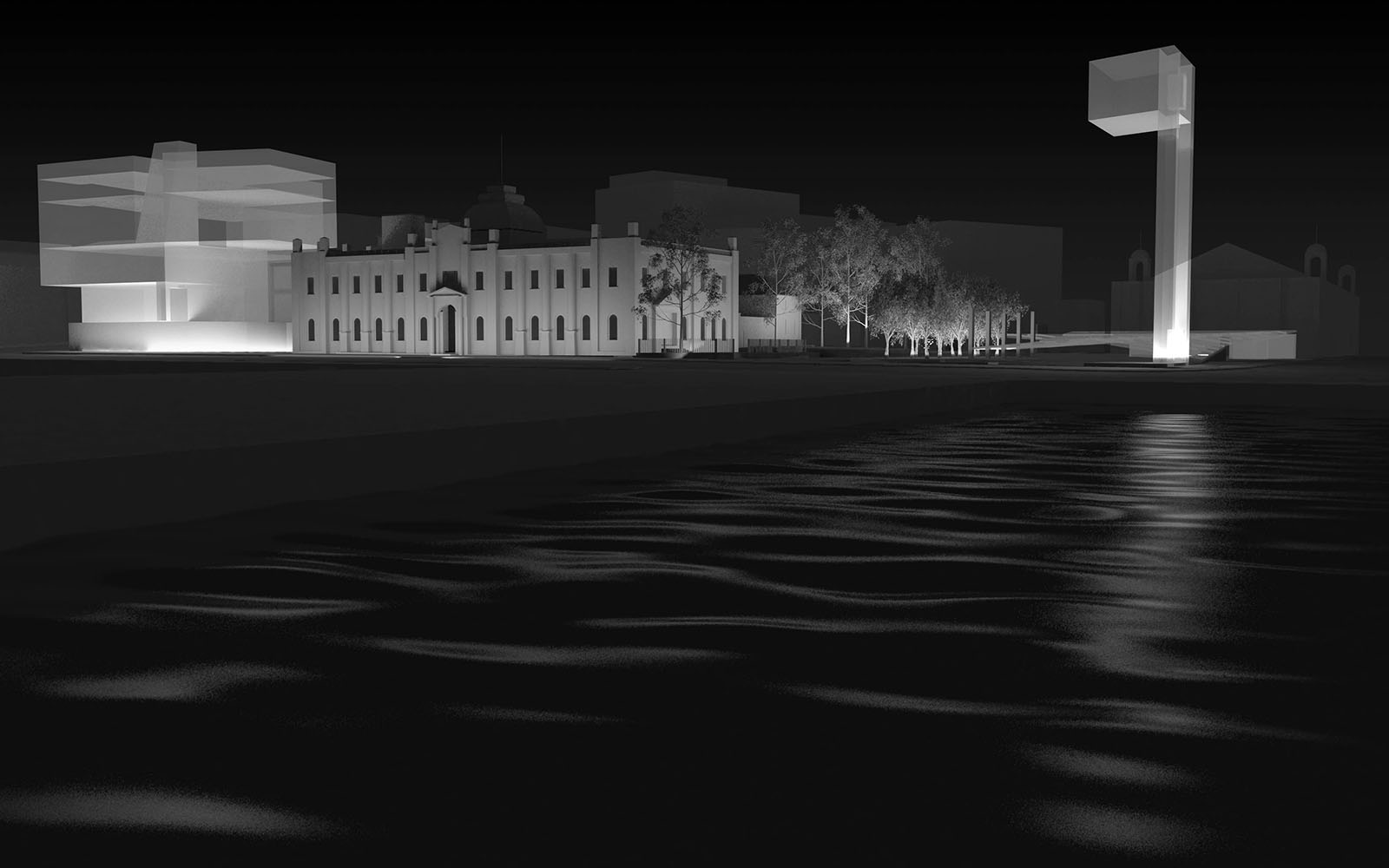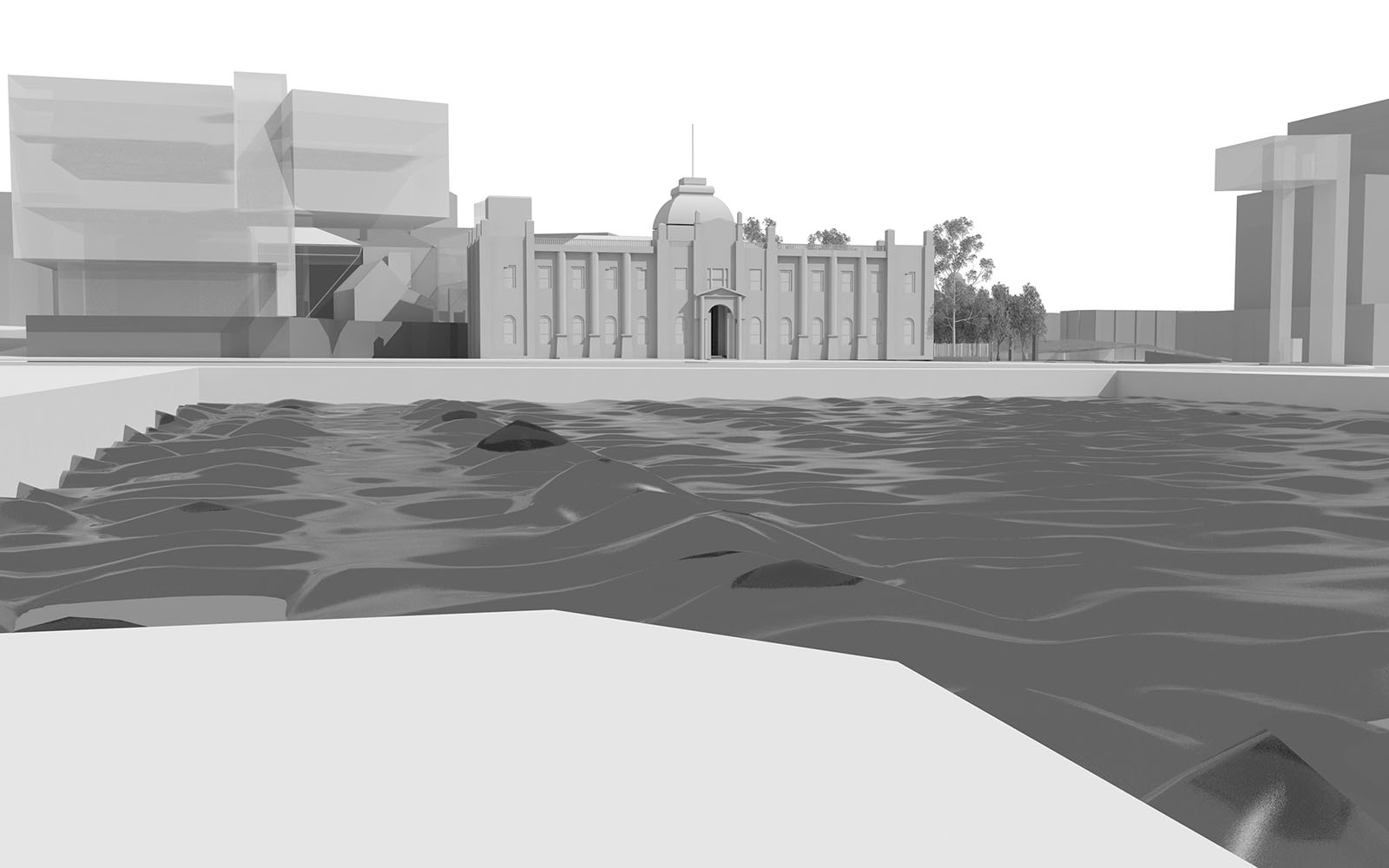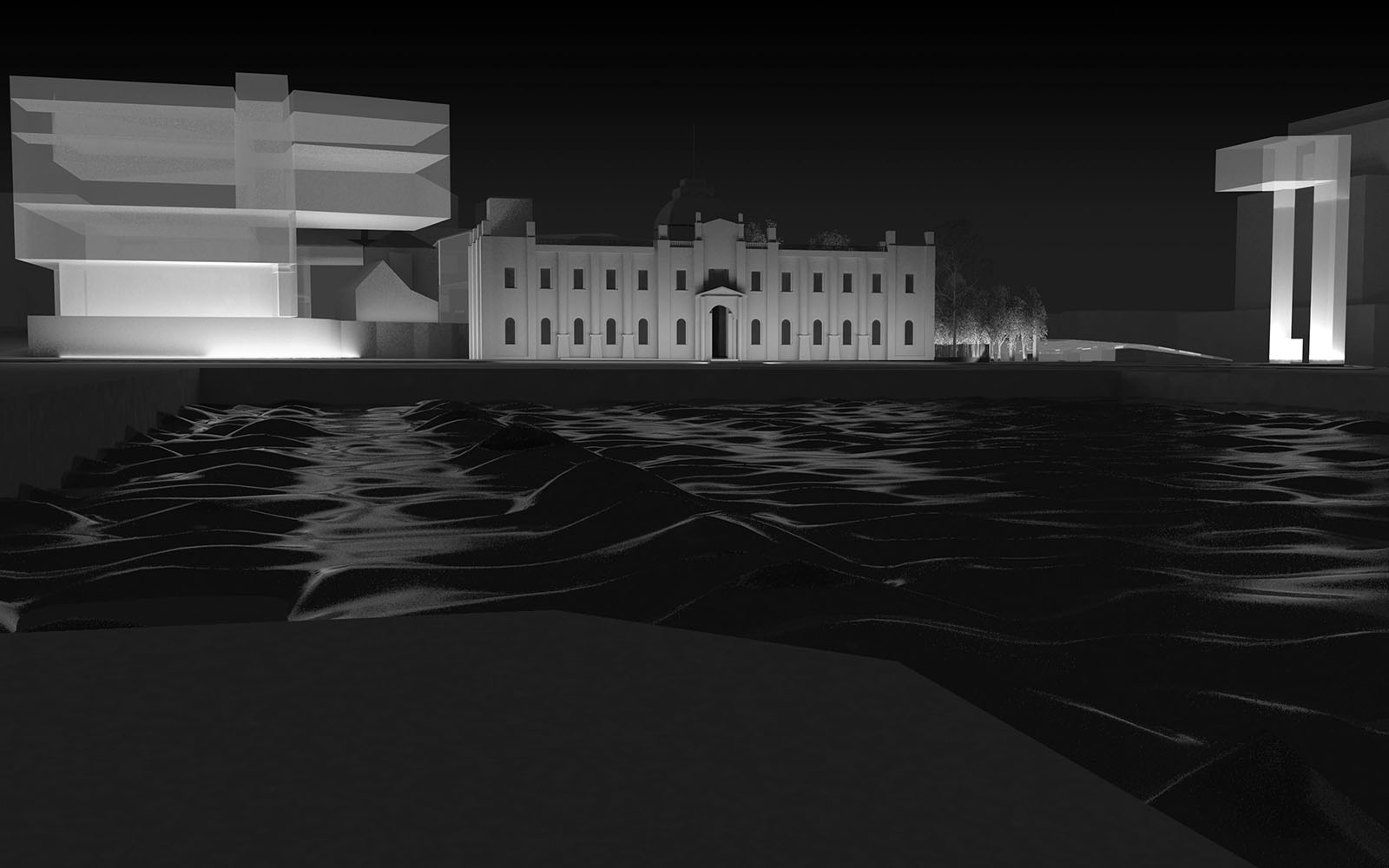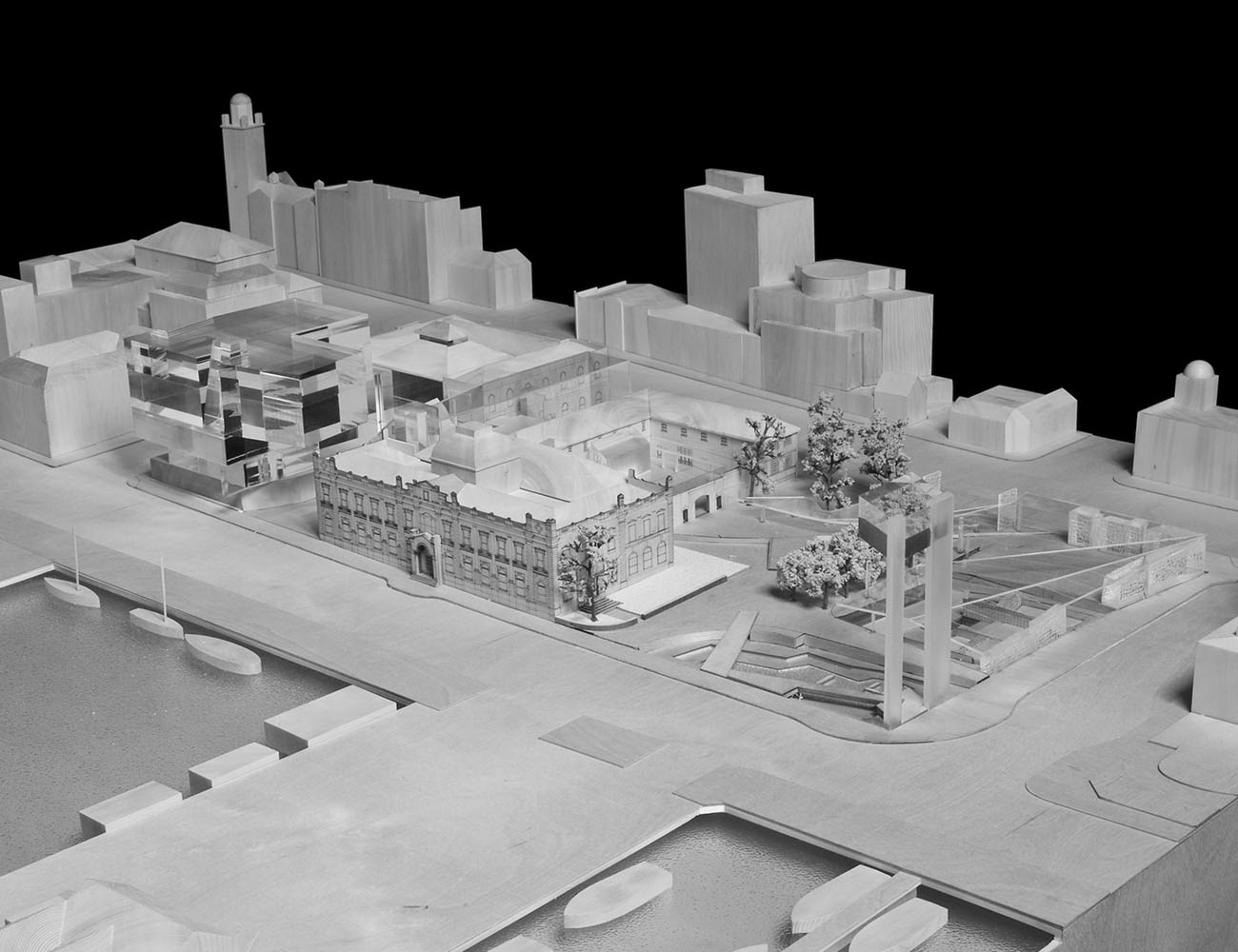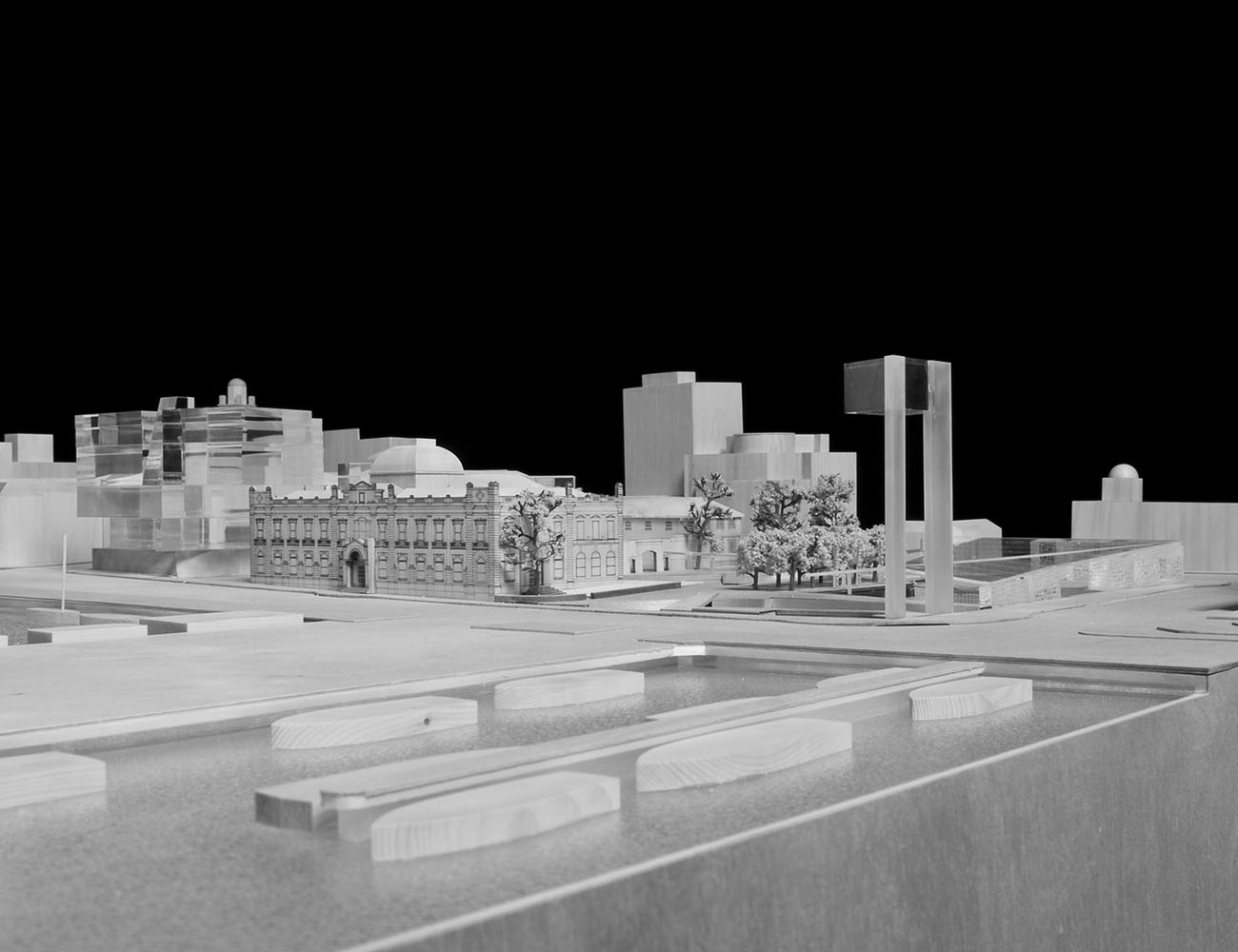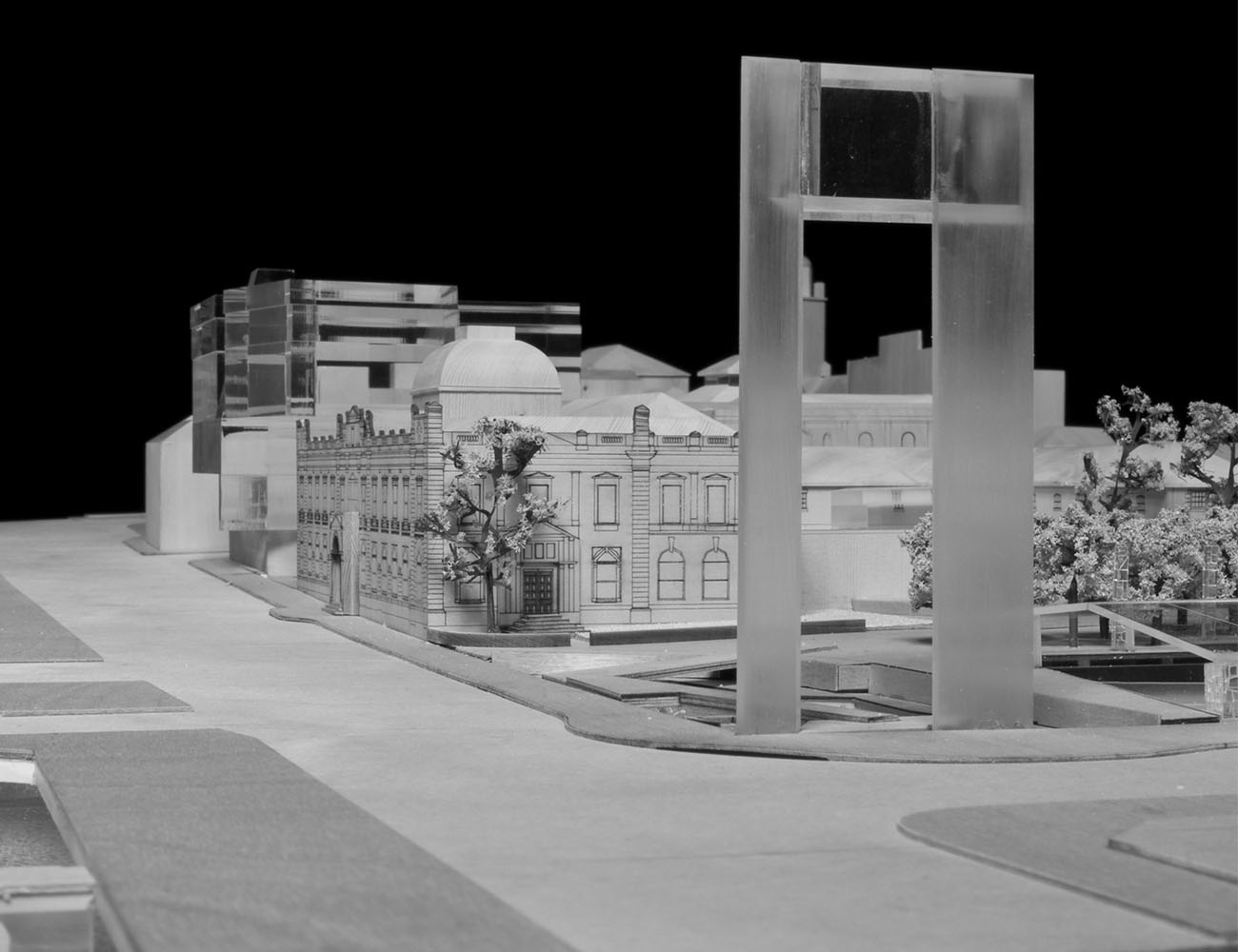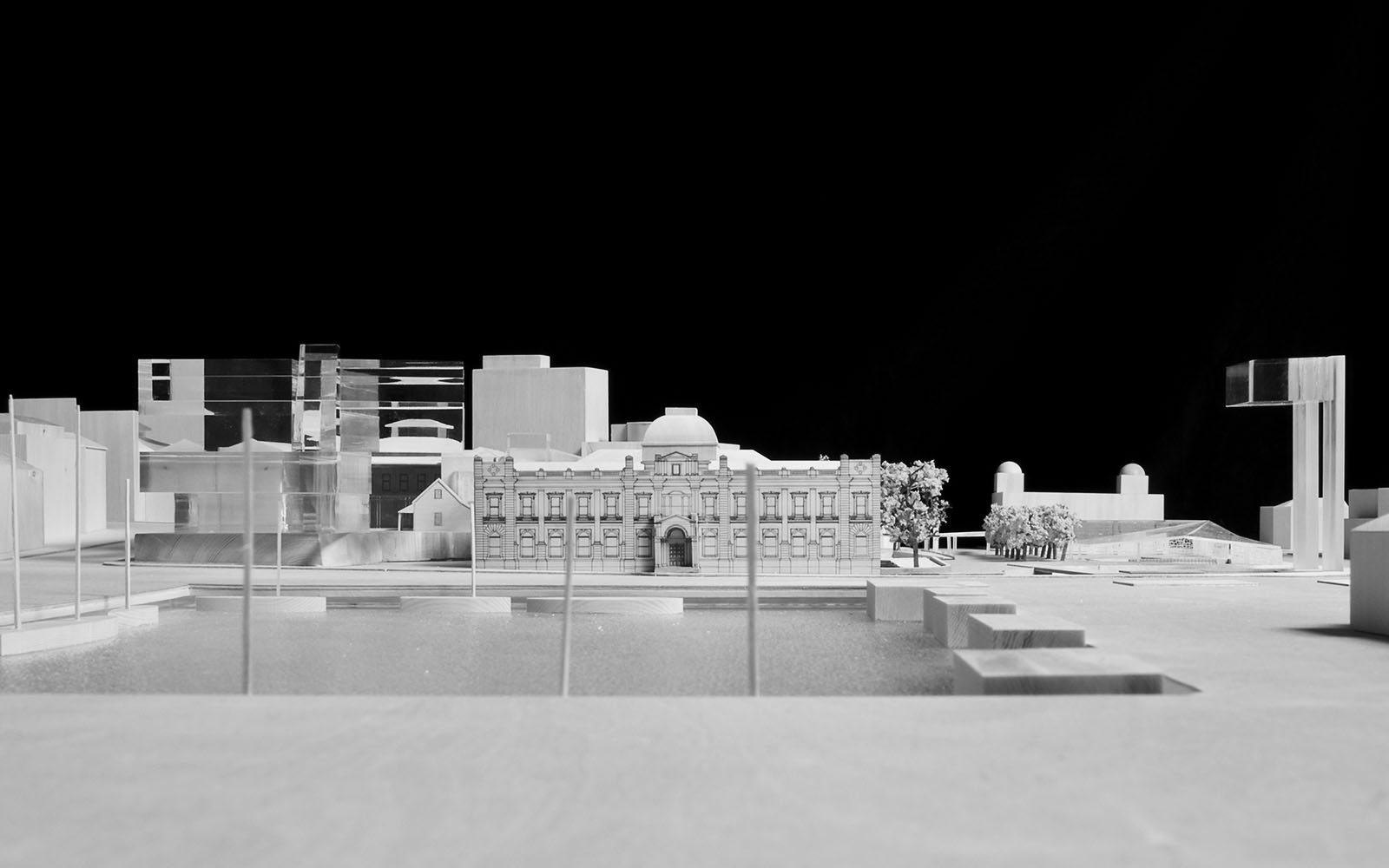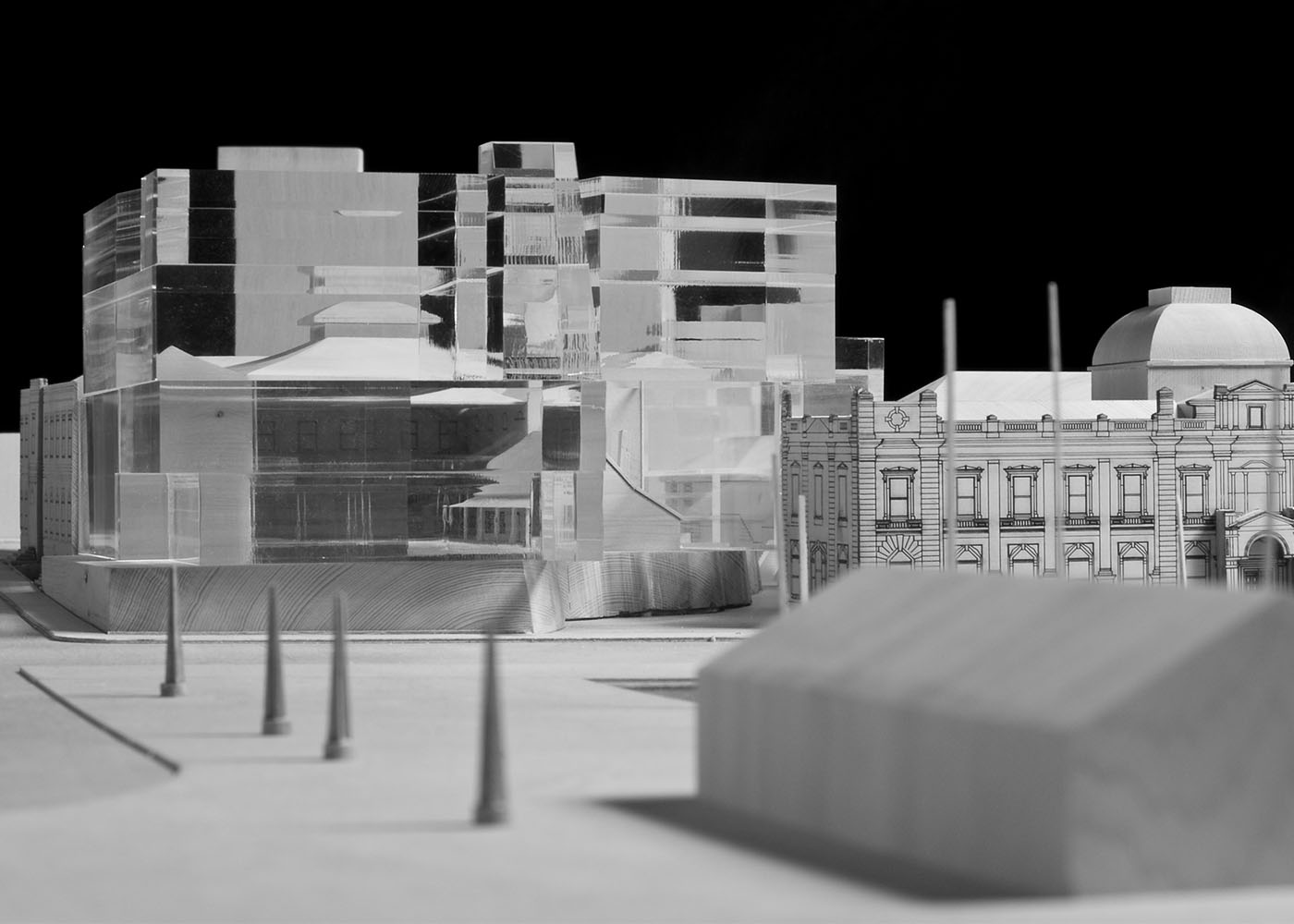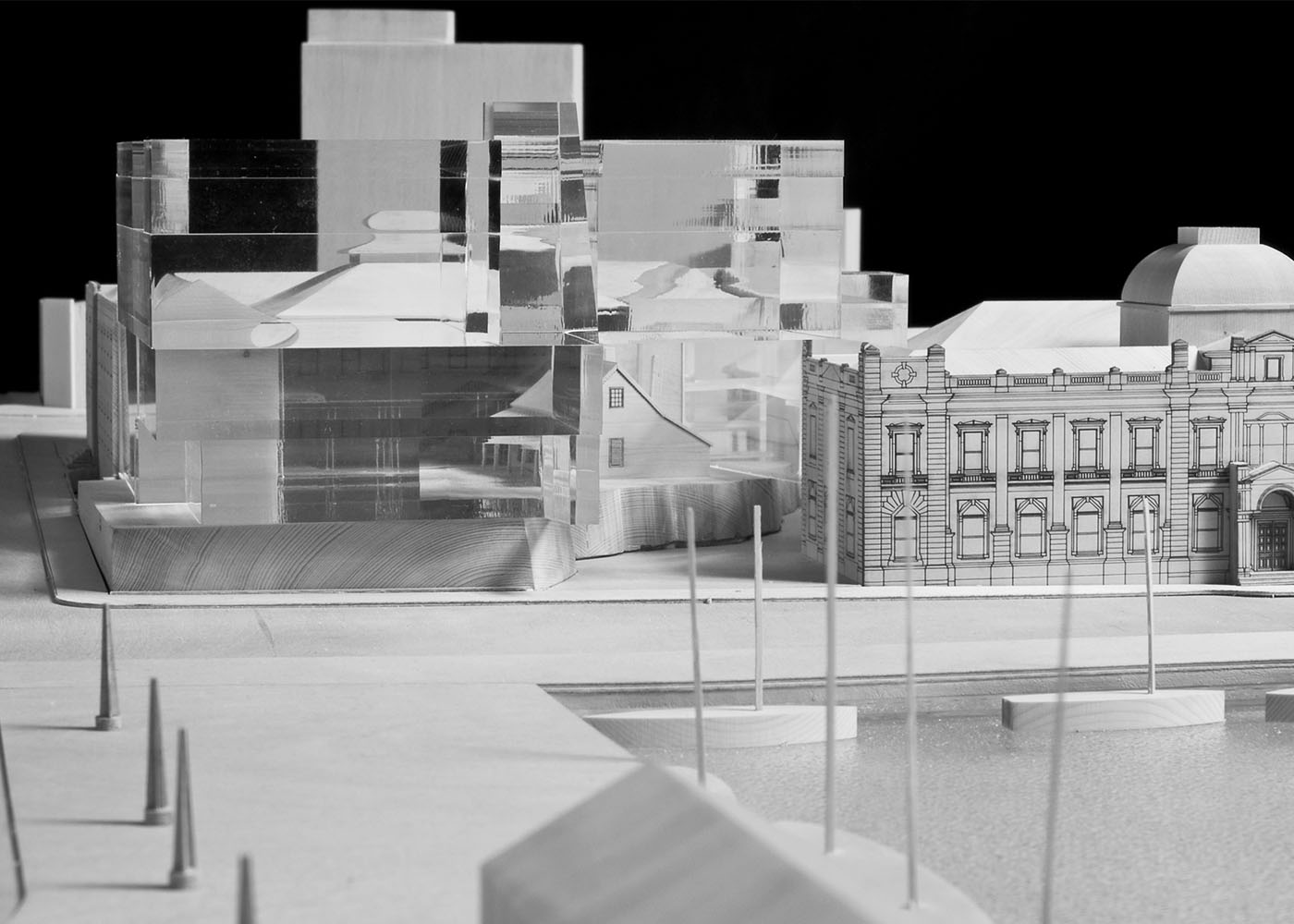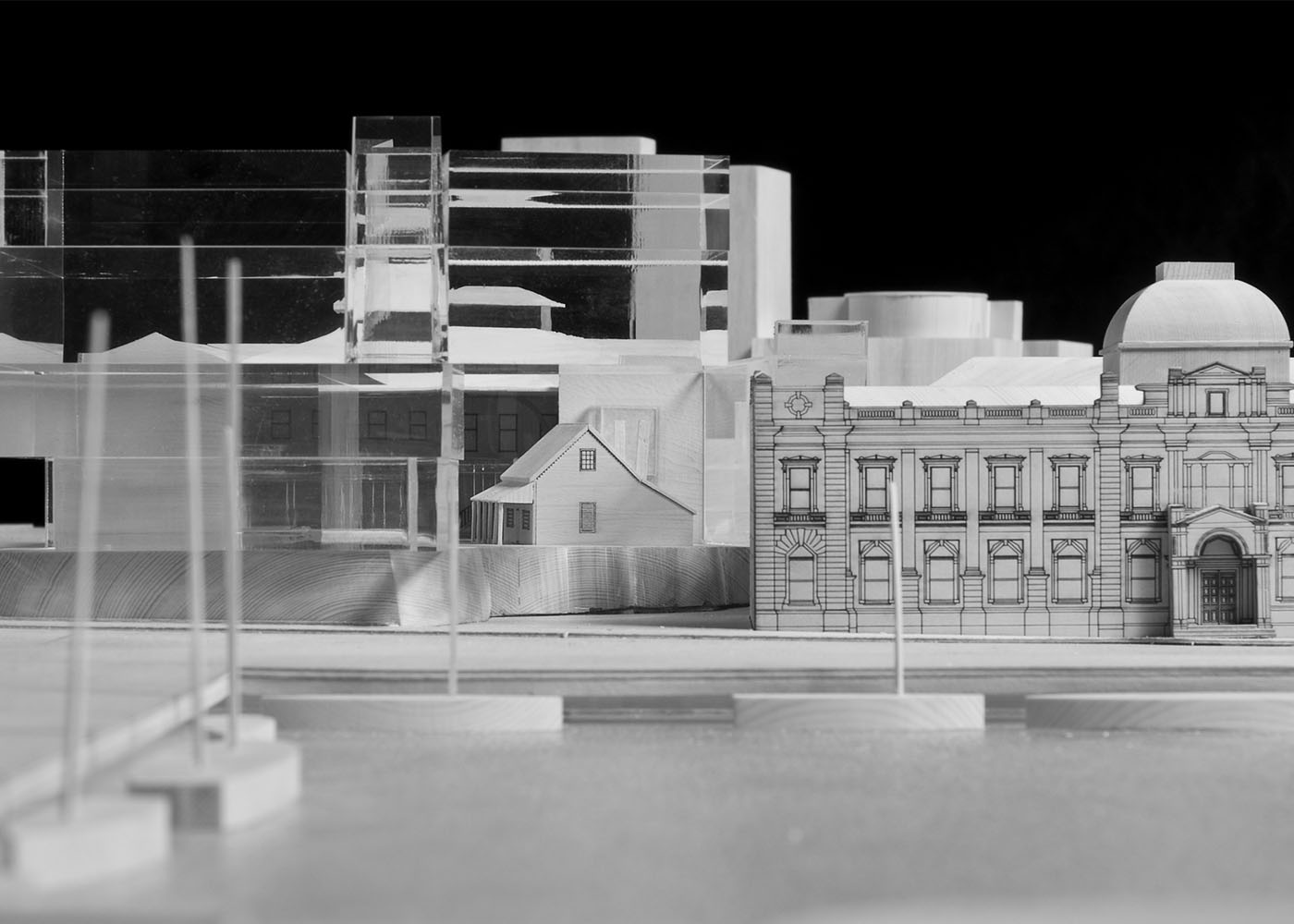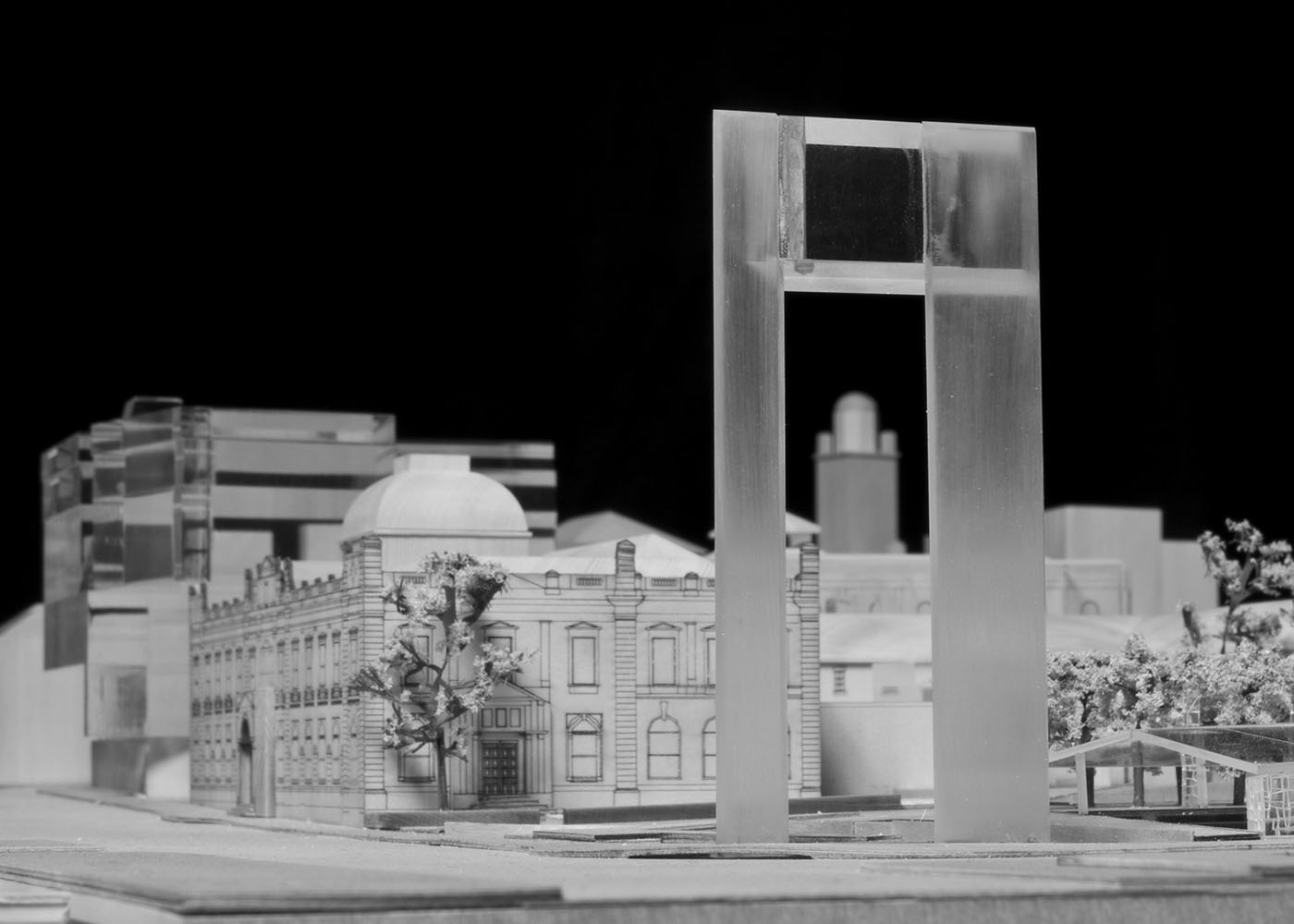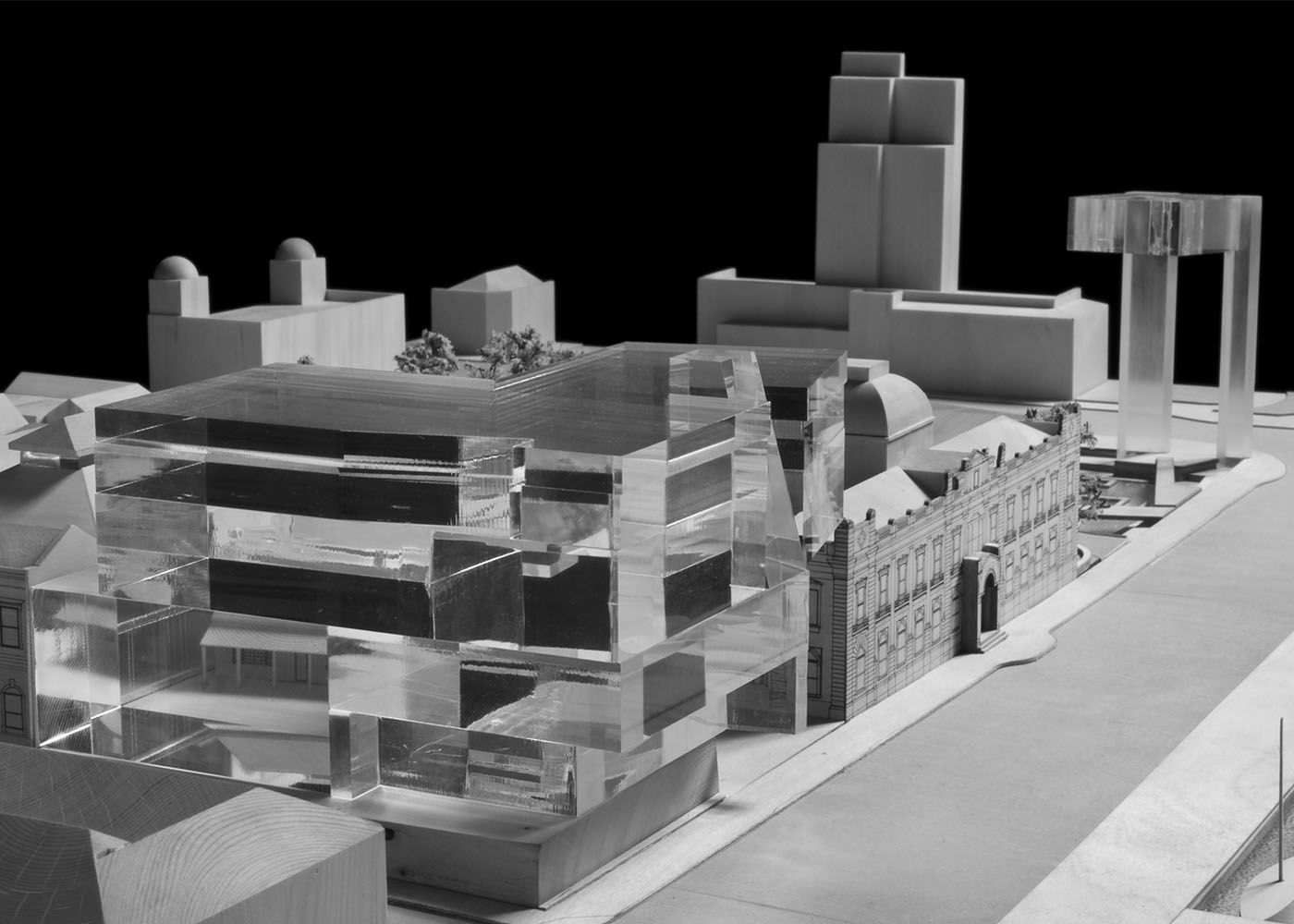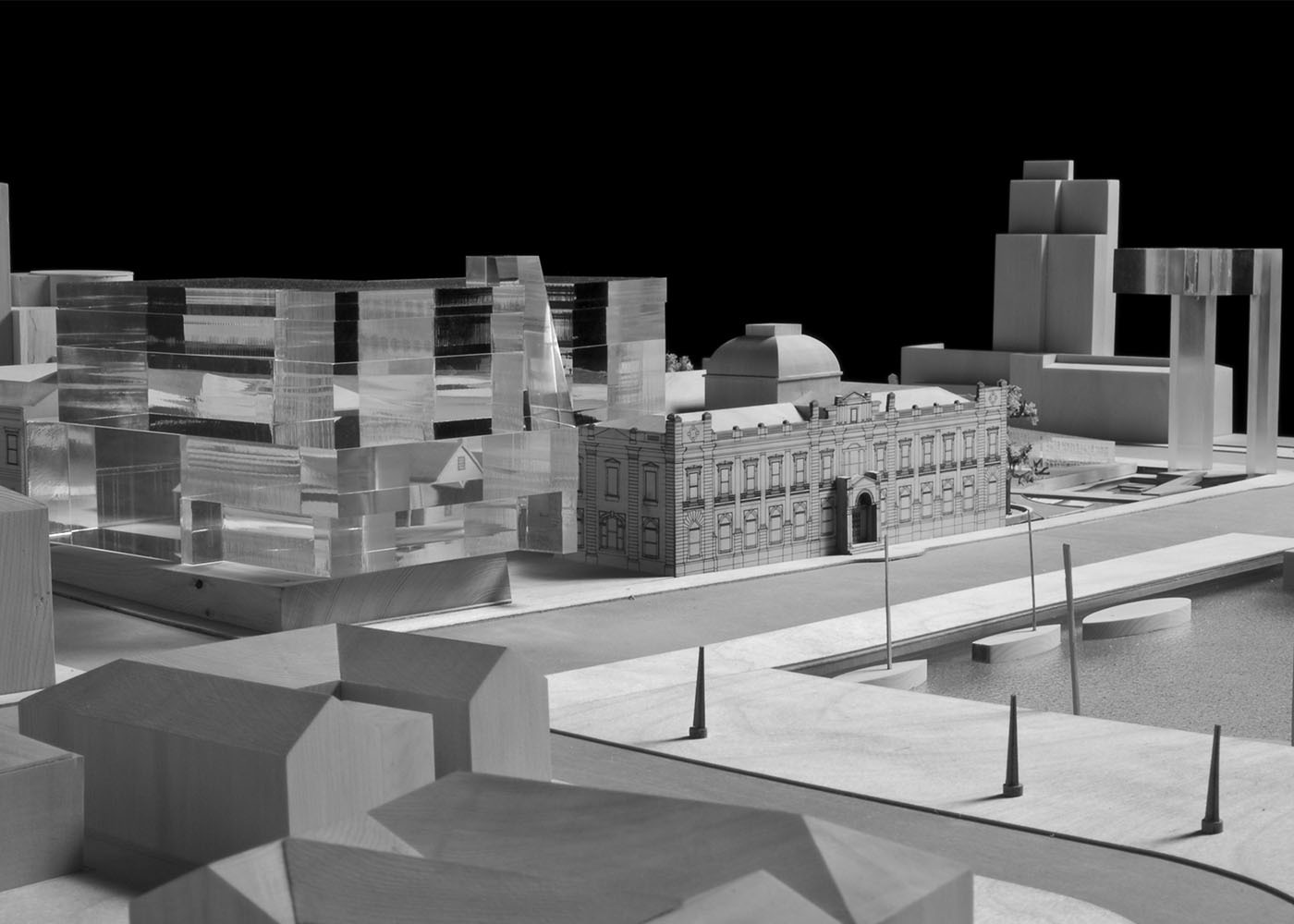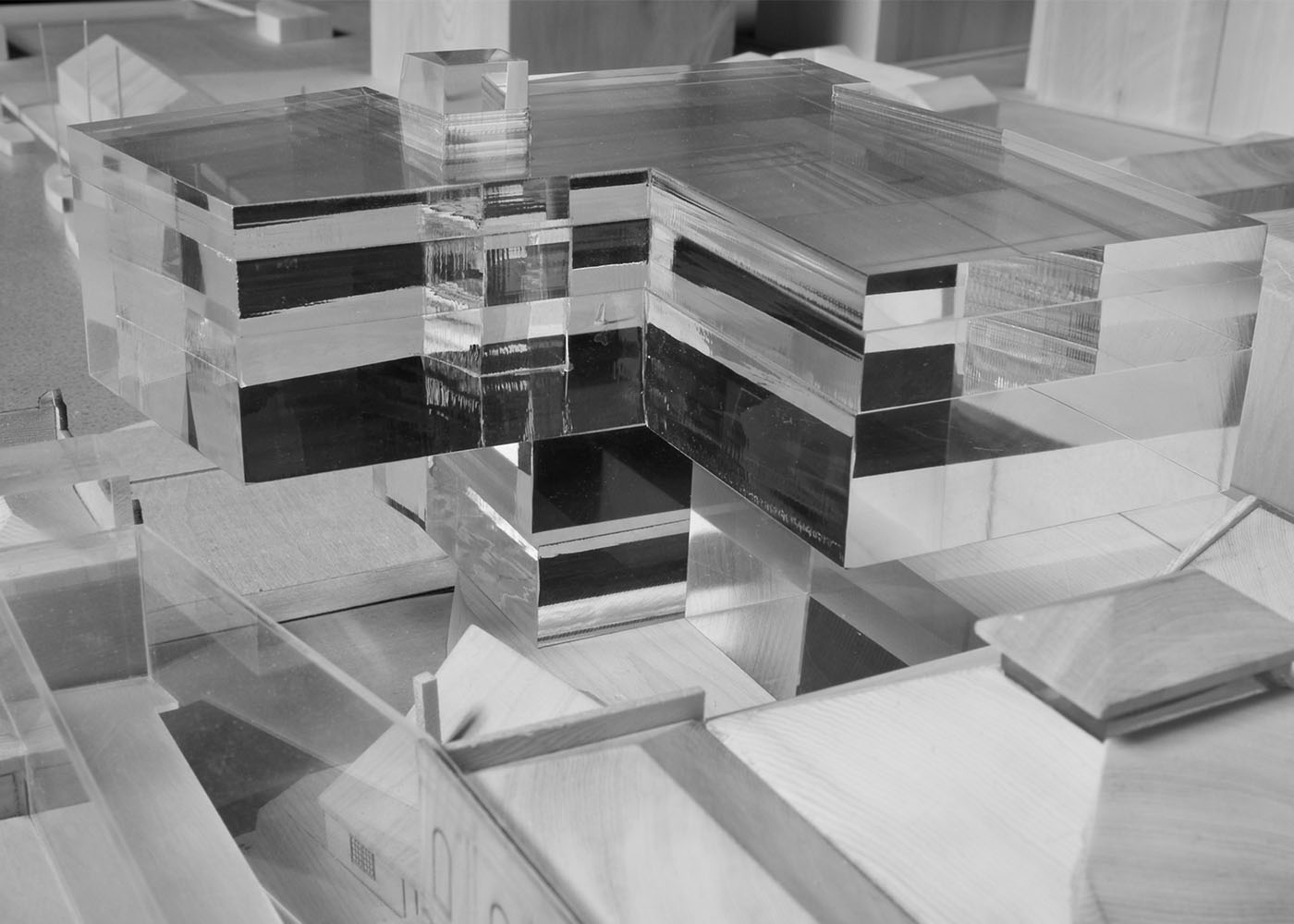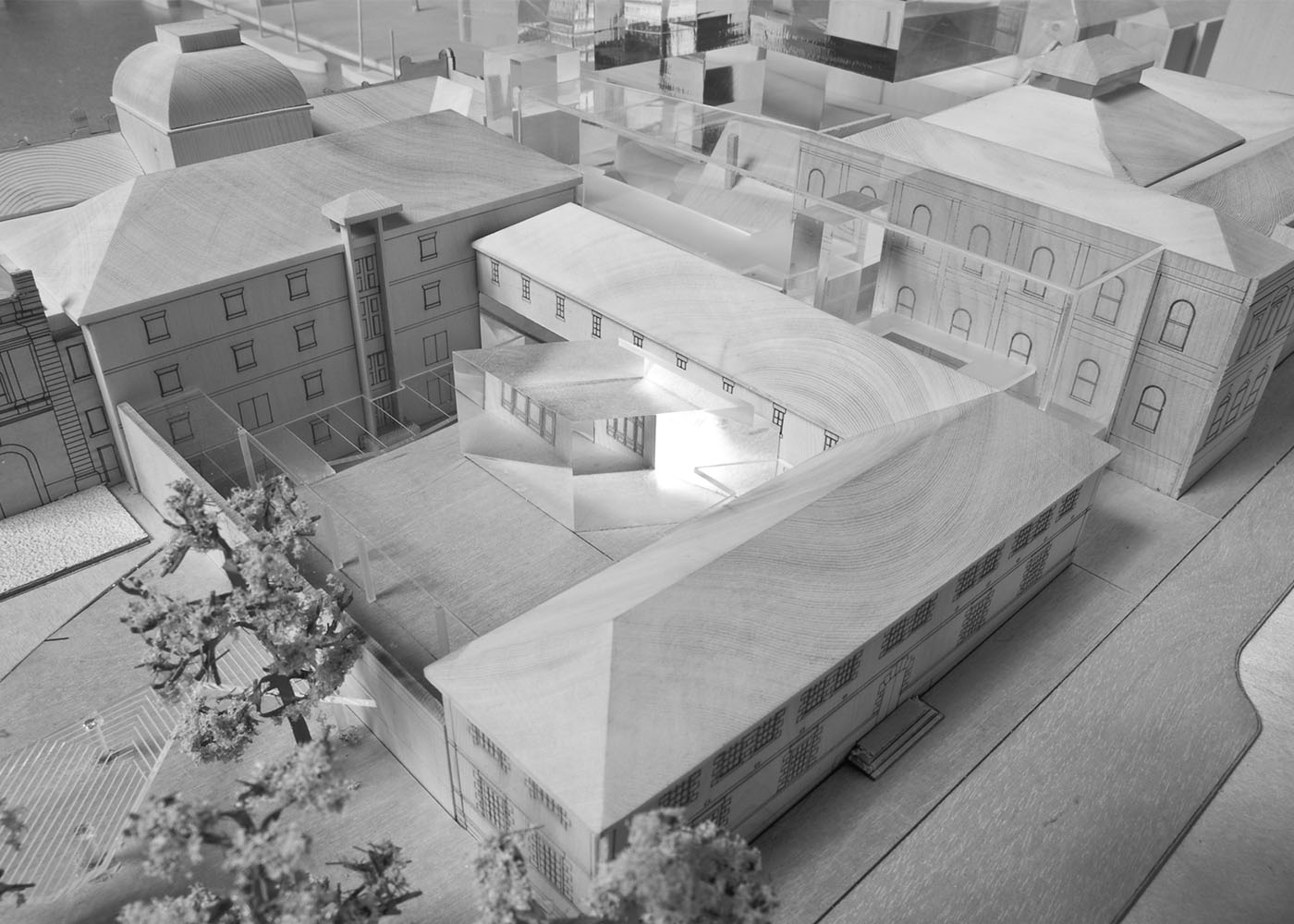-
An intersection of artefact, building and landscape
Tasmanian Museum and Art Gallery
TERROIR, in association with Johnson Pilton Walker, were engaged in late 2007 for the Masterplan of the Tasmanian Museum and Art Gallery, a project that set a path for the redevelopment of tan institution which has Australia’s most diverse museum collection spanning the arts, natural history and social history and the nation’s most significant collection of heritage buildings on a single site.
Starting with the collection which includes Australia’s finest collection of Colonial paintings, the only significant collection of Indigenous Tasmanian artefacts, and significant items from the state’s industrial heritage – key themes and points of significance were found to intertwine them on site in a poetic way. Then, in the context of the building stock – which includes Australia’s first purpose built art gallery, the oldest standing building in Australia and an archaeological site with significant indigenous material – the collection could be be unfolded in a meaningful way. In more pragmatic terms, all this could occur while addressing the needs of a contemporary institution of this type .
- TYPE Masterplan | Urban Renewal
- LOCATION Hobart | AU
- YEAR 2007
APPROACH
Our approach was to undertake a series of research tasks to assist in clarifying how to understand the project. Given the importance of so much of the collection, building stock and site, this was no easy task. Having landed on the concept of the project as an intersection of the exceptional natural landscape around the site; the exceptional suite of buildings on site; and the unique collection which combines both museum objects and artwork; a series of diagrams then unfolded how these intersections would work. Using this strategy as a constant, we then moved on to address key questions such as the location of new buildings, the nature of renovations and additions and how the collection would be curated in this context.
